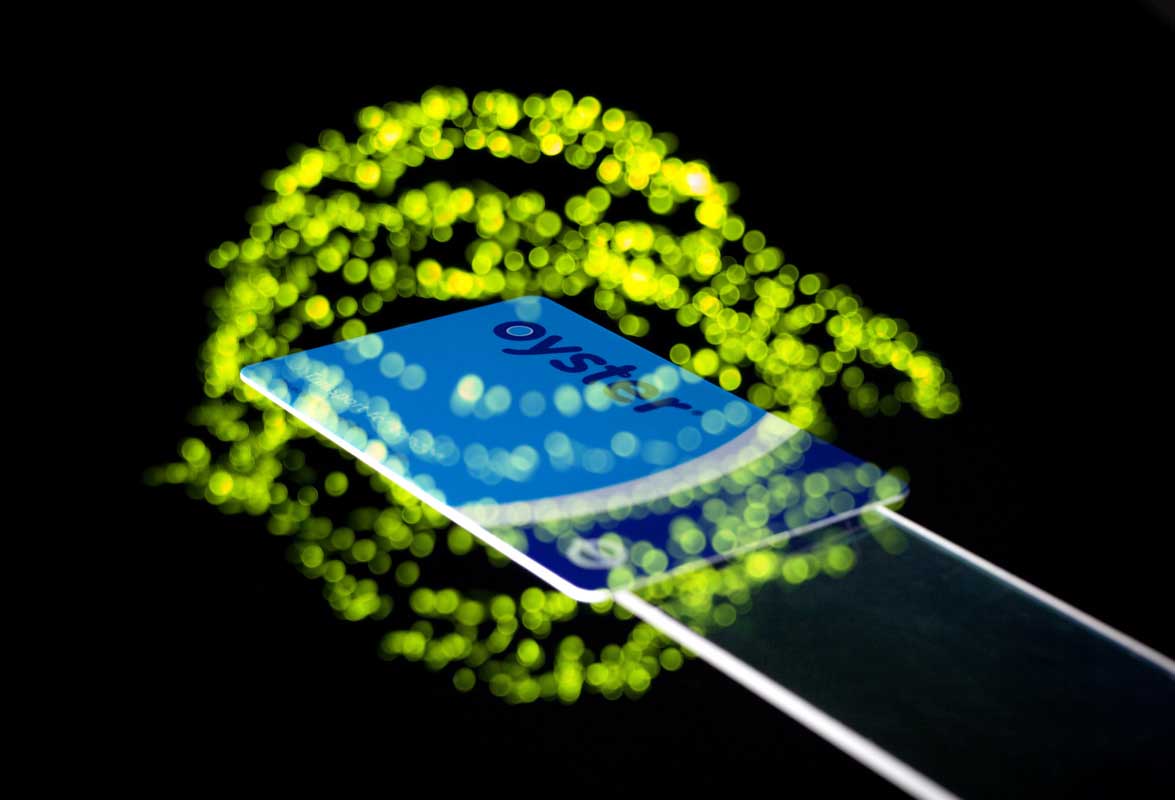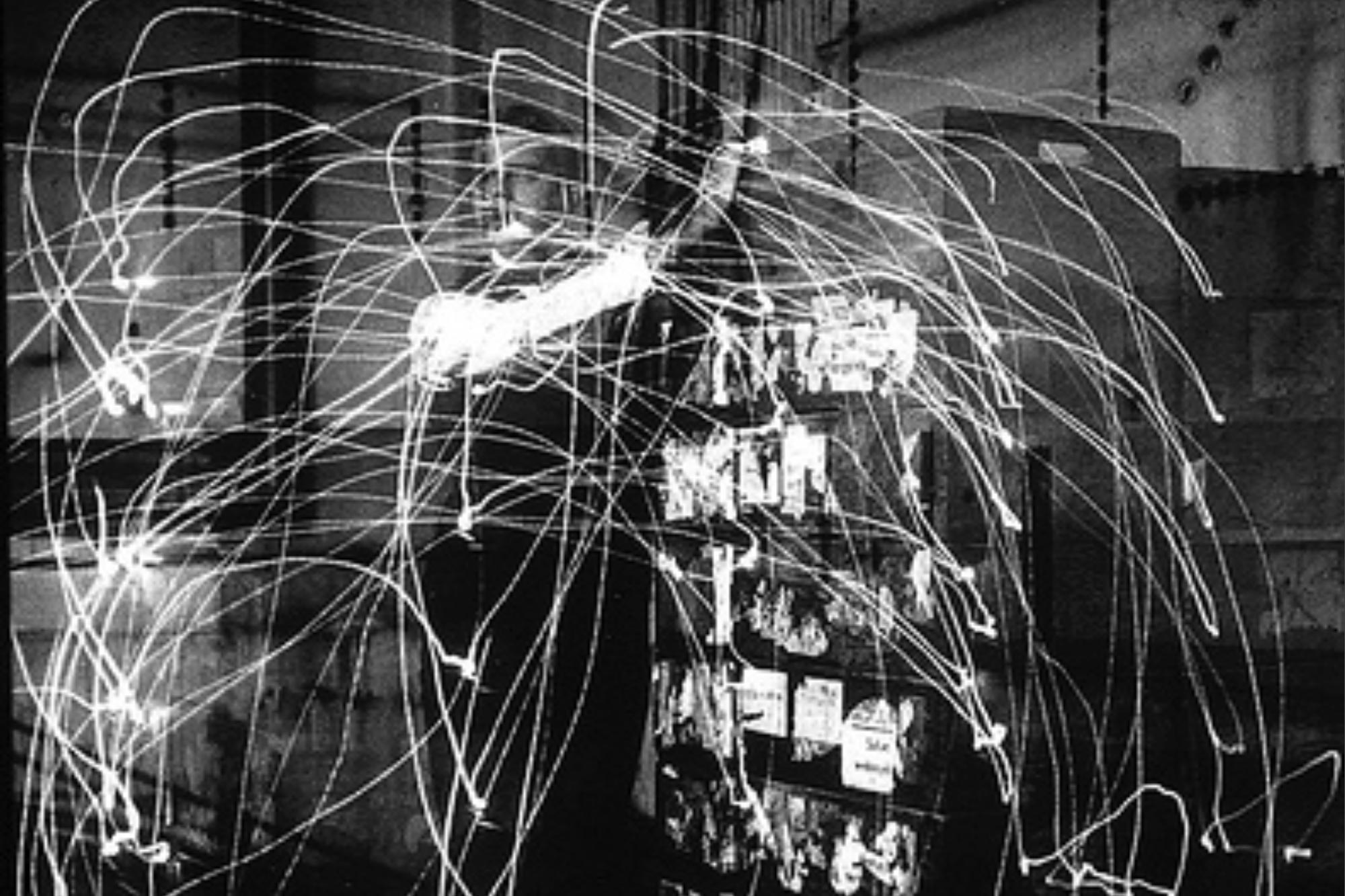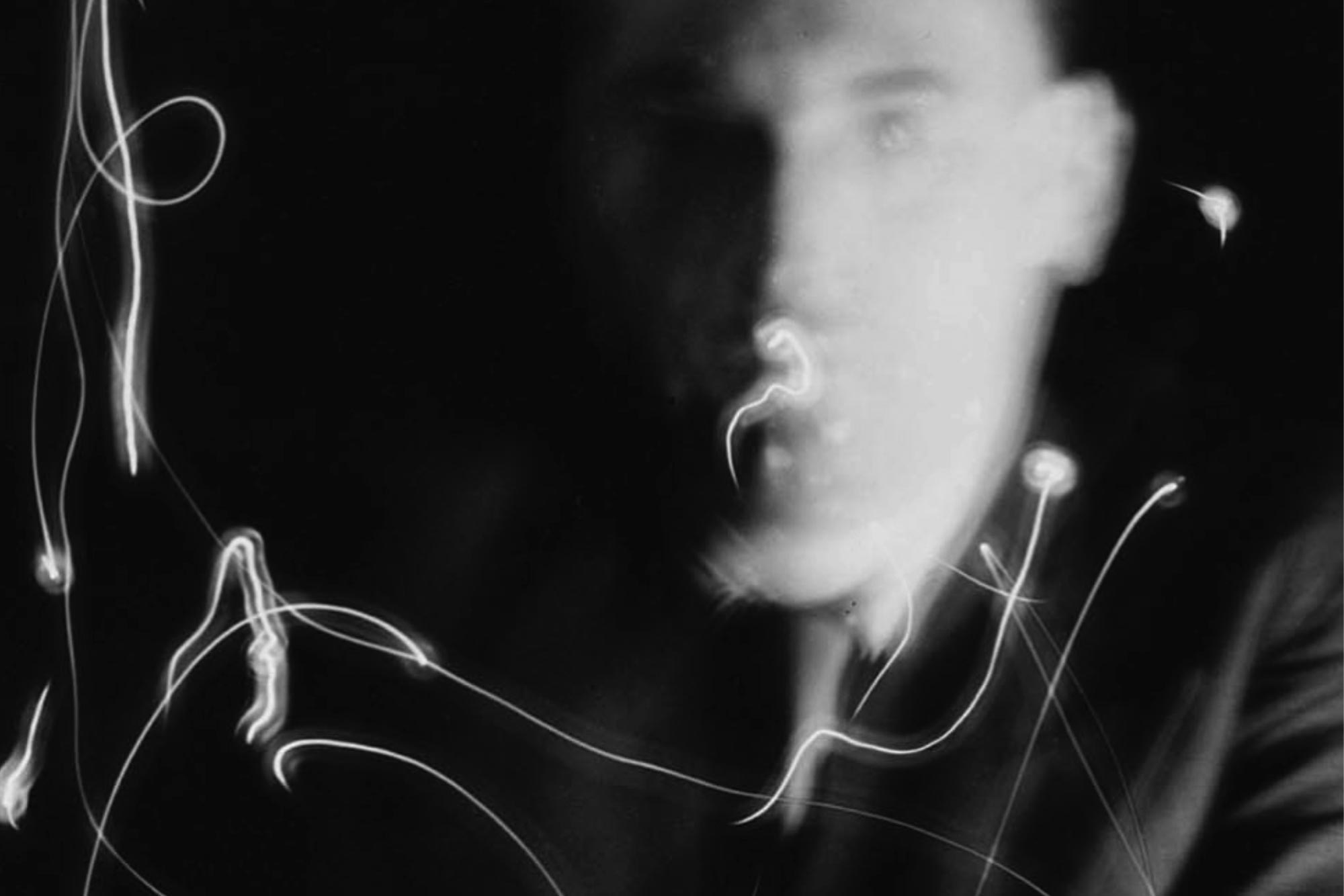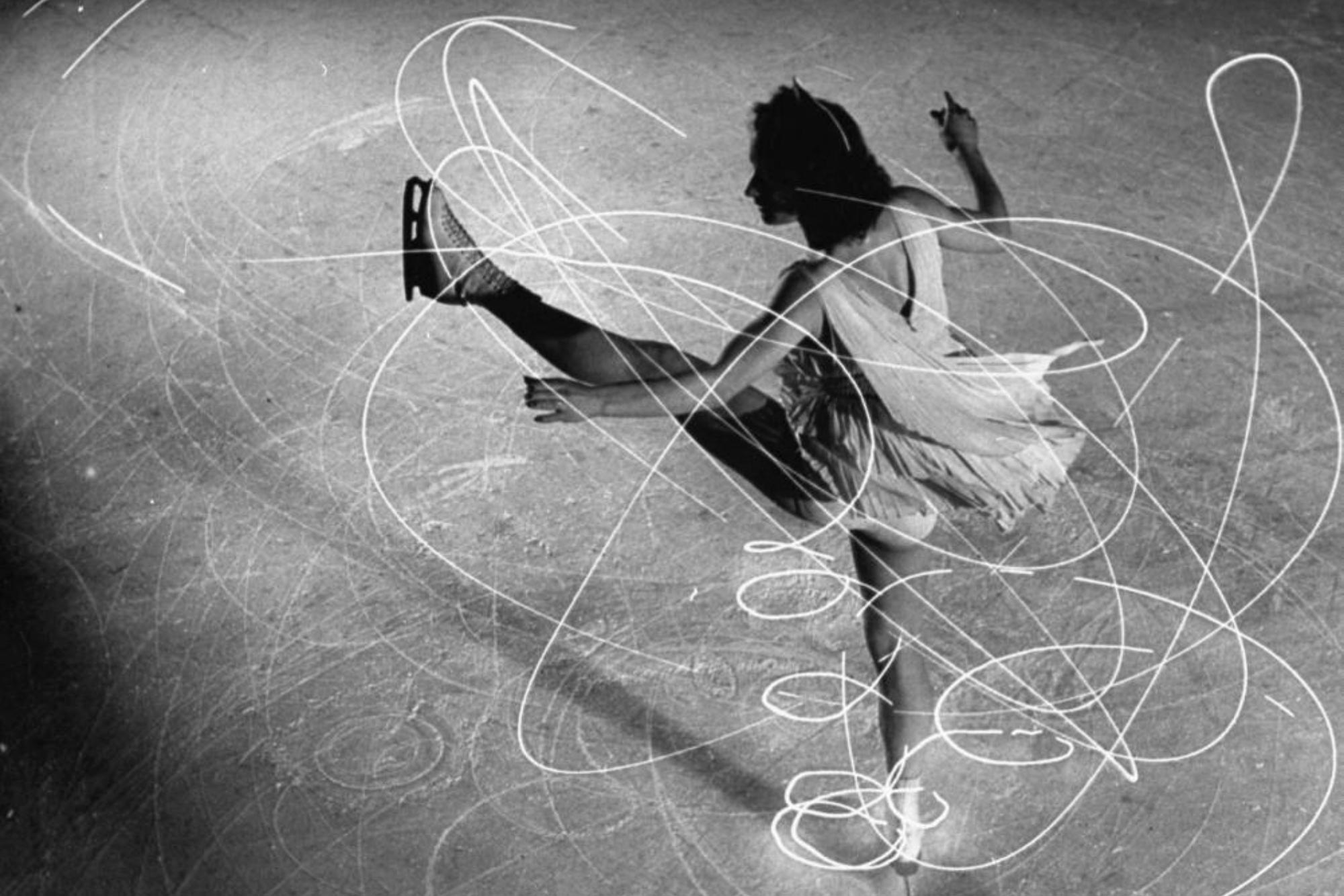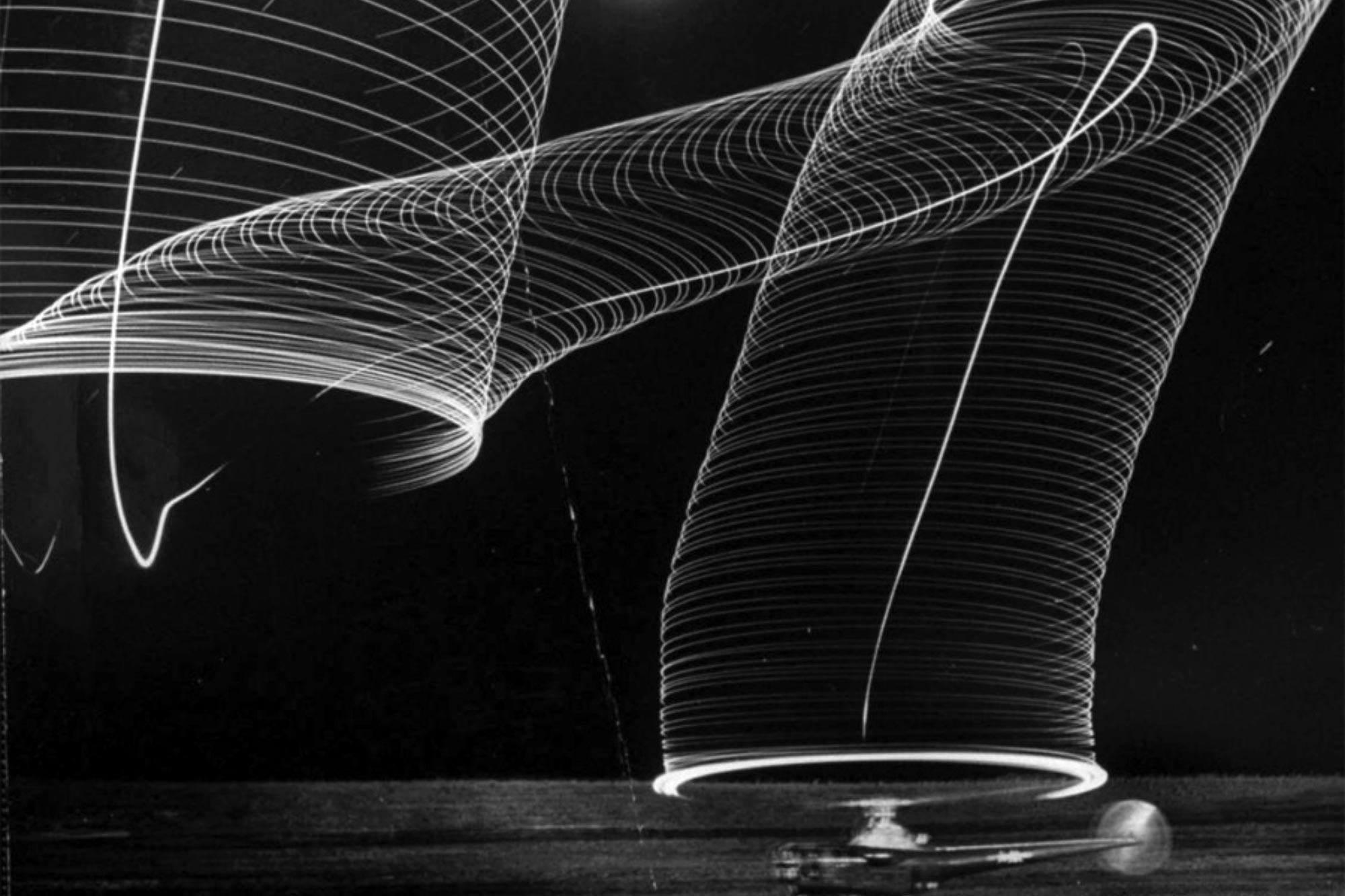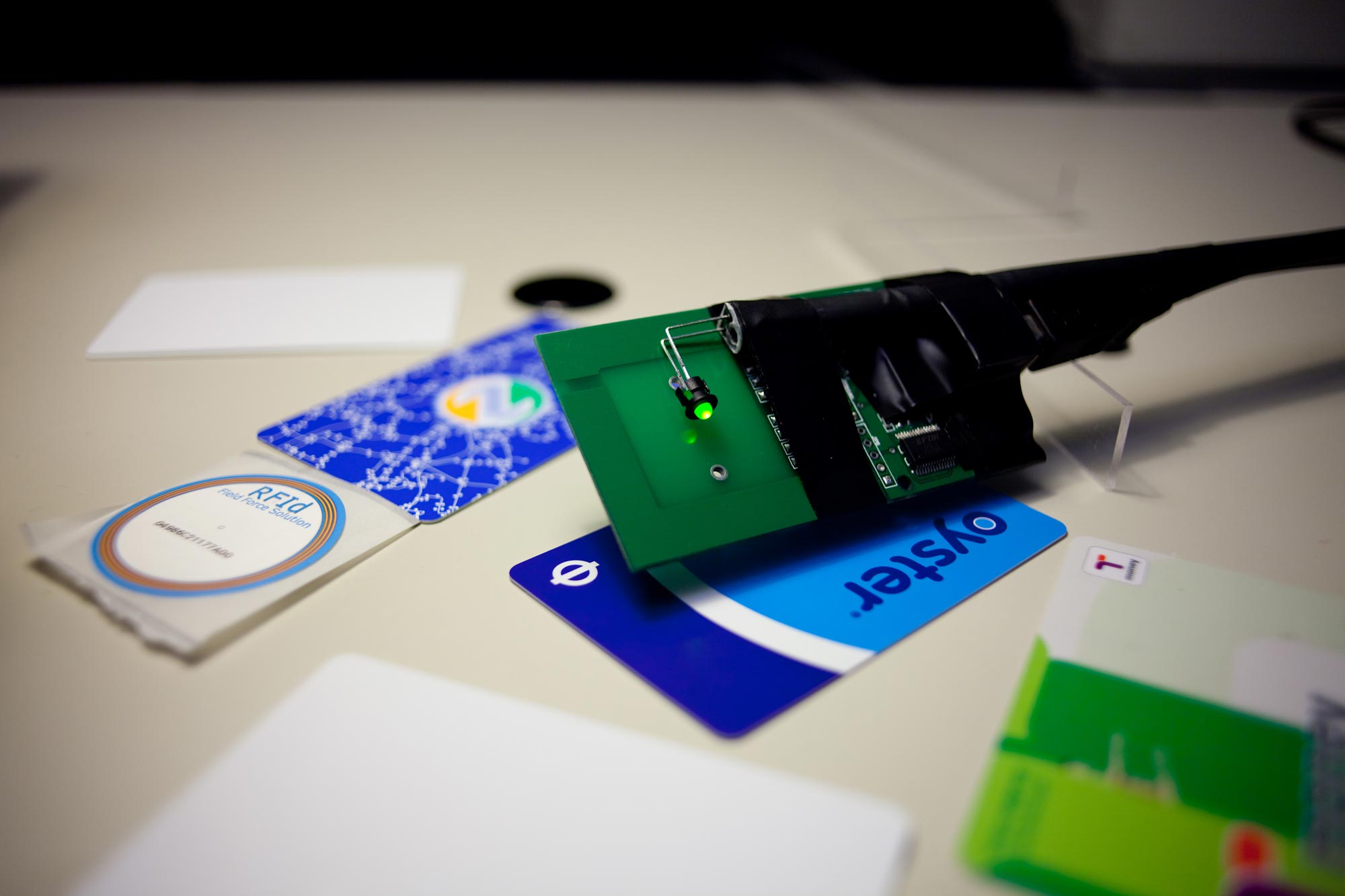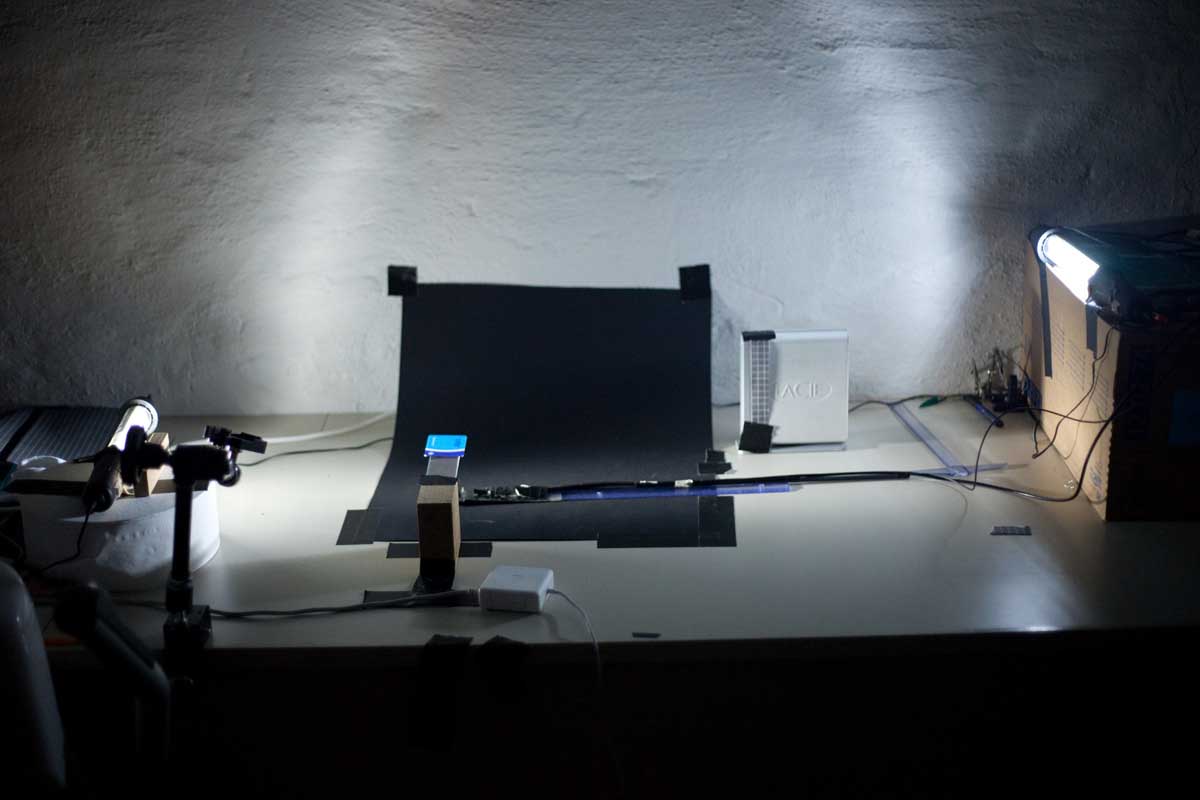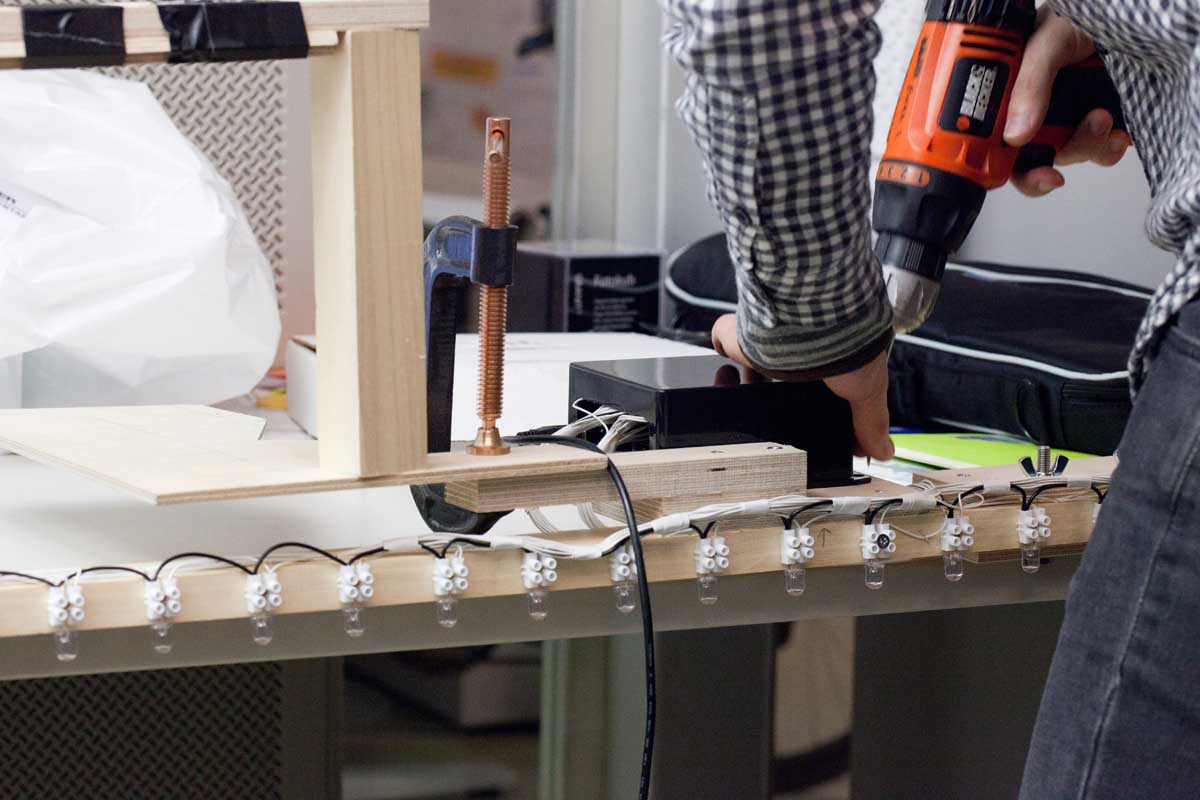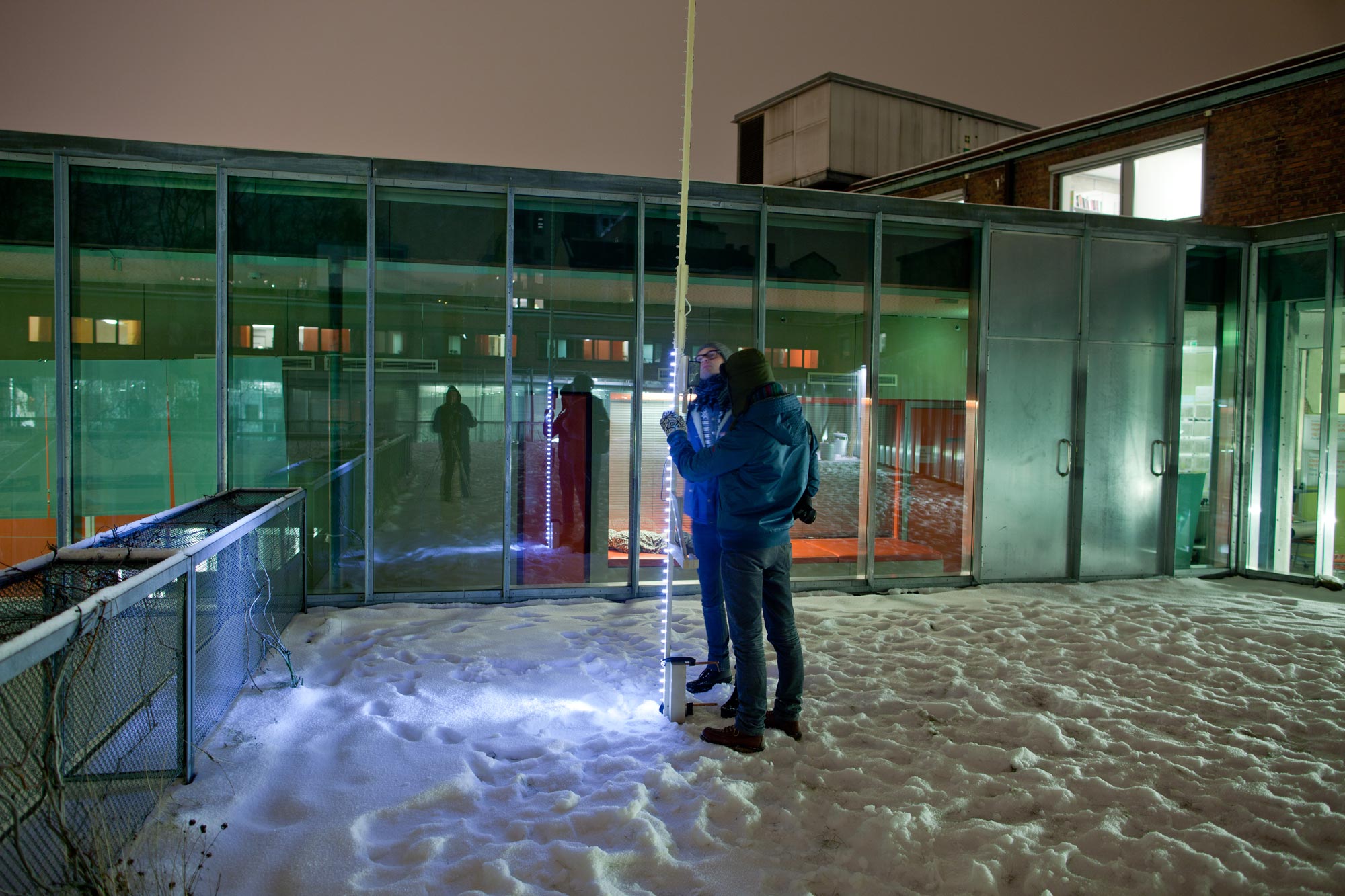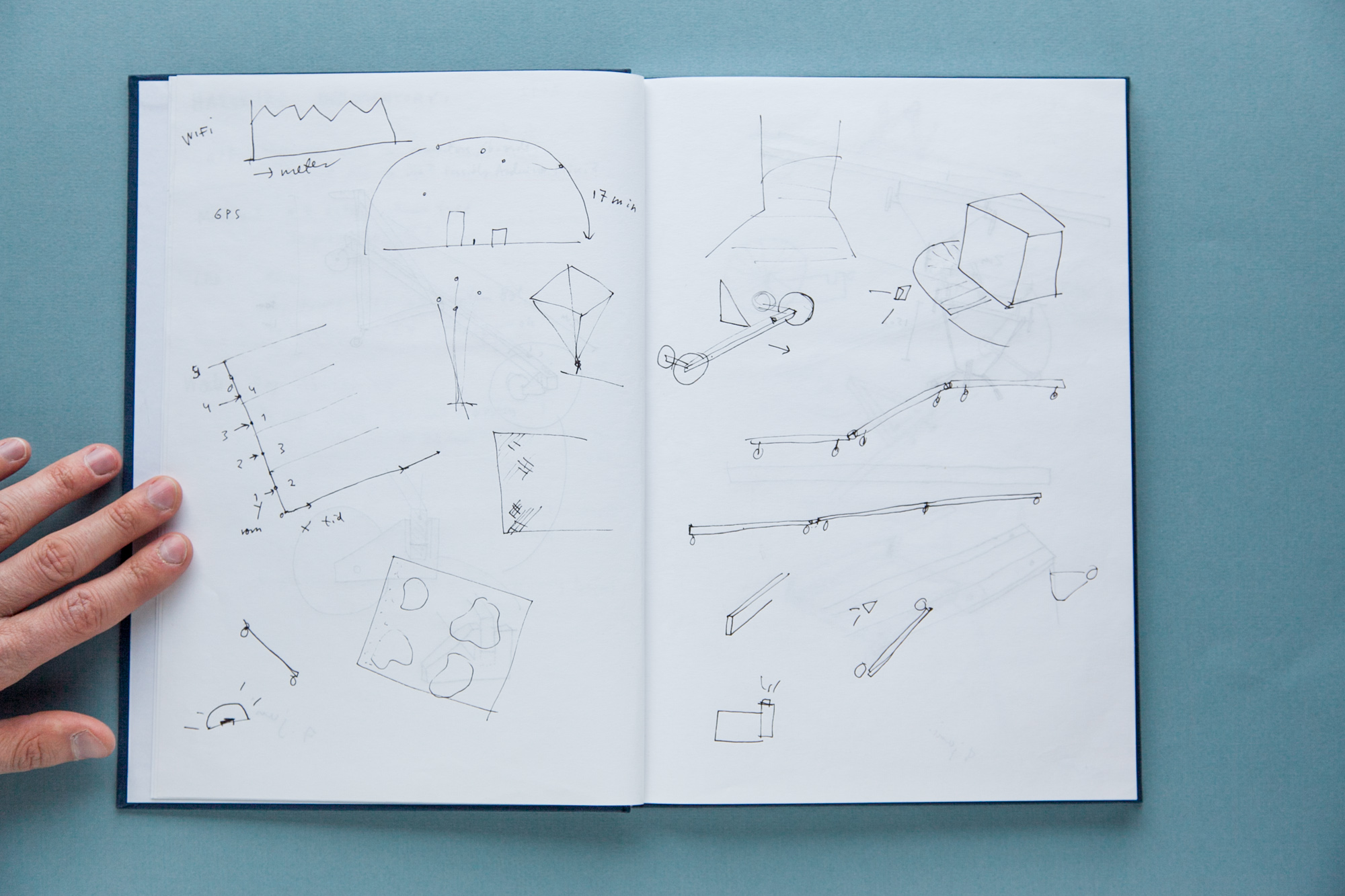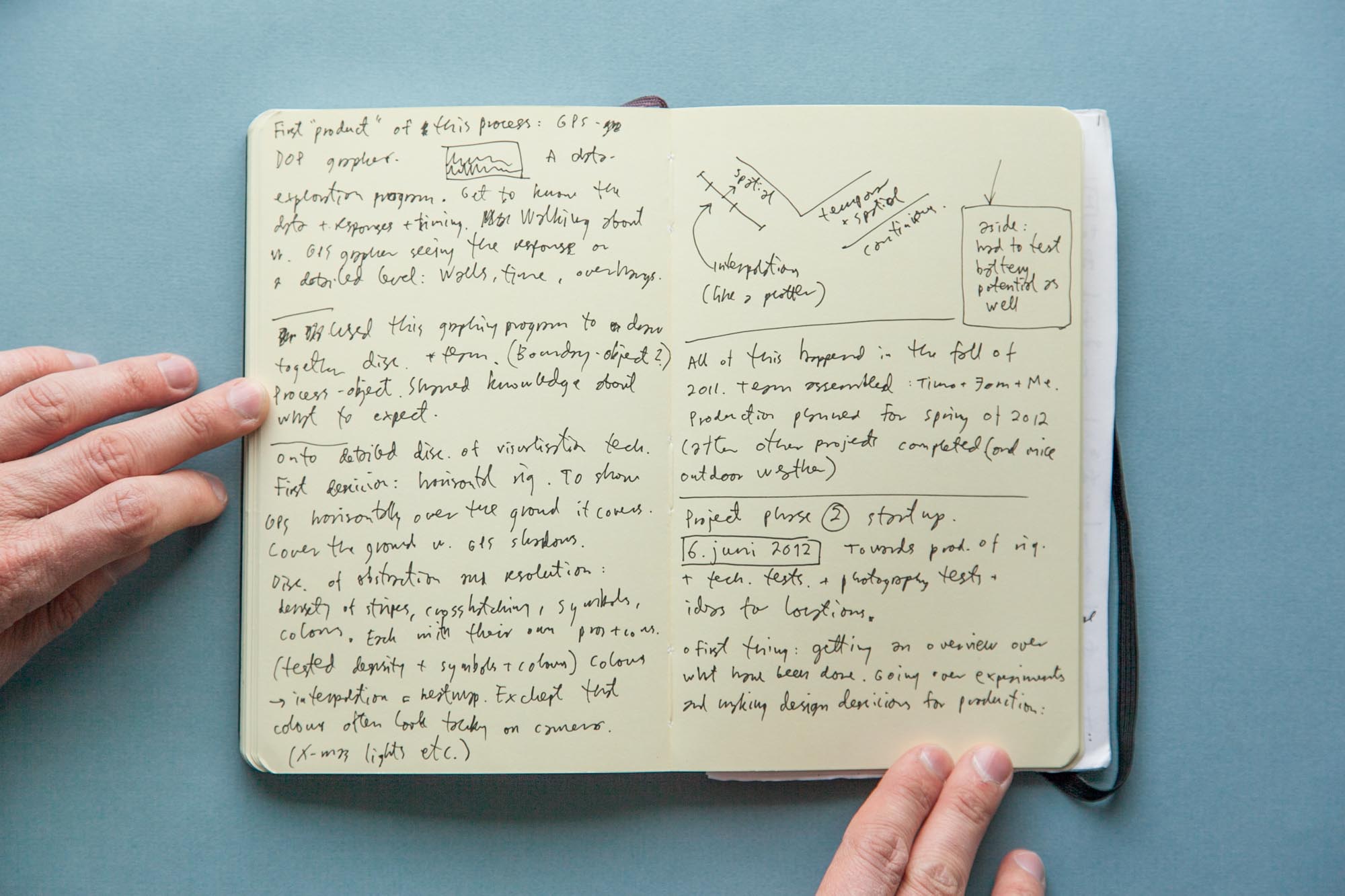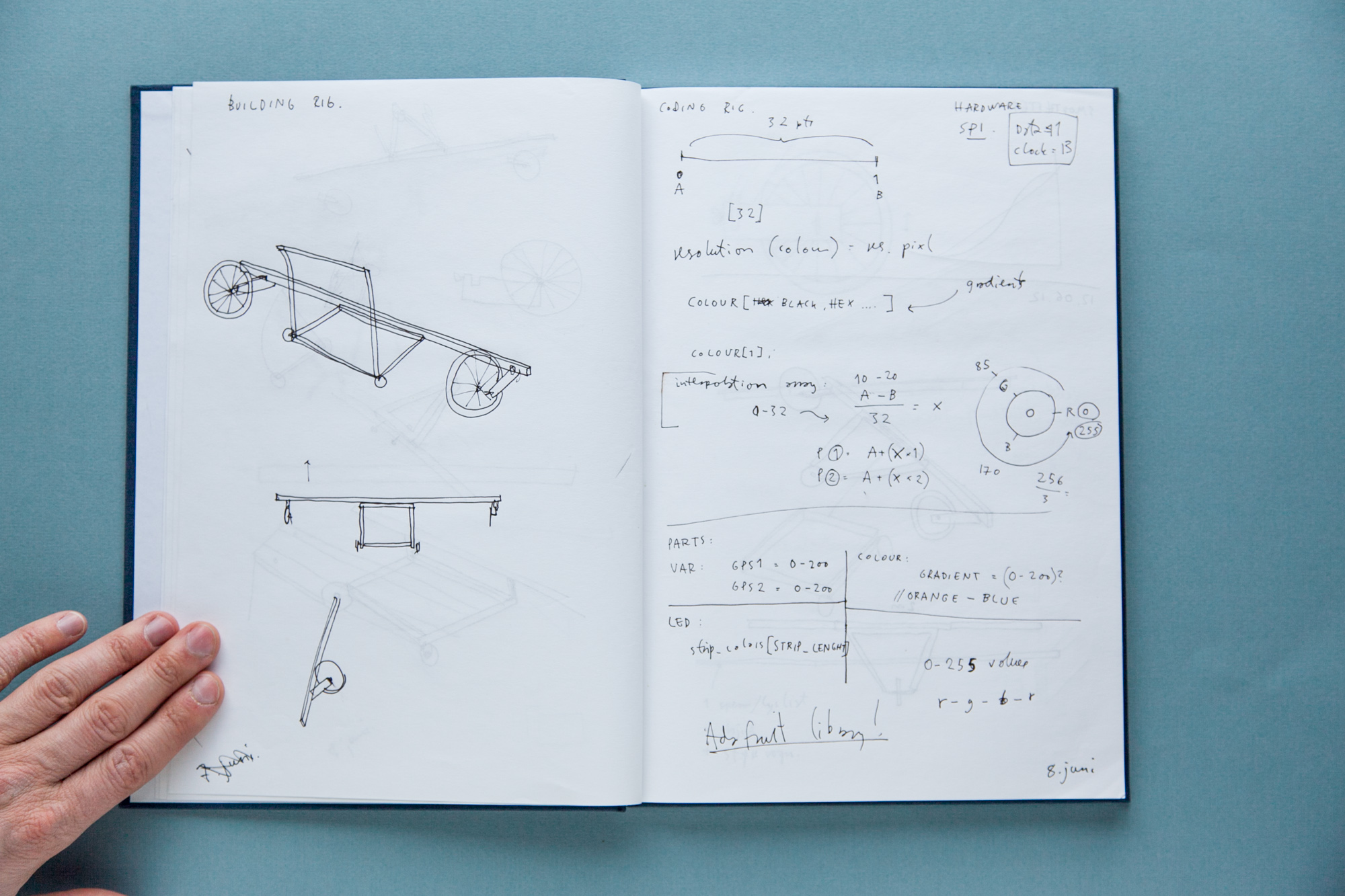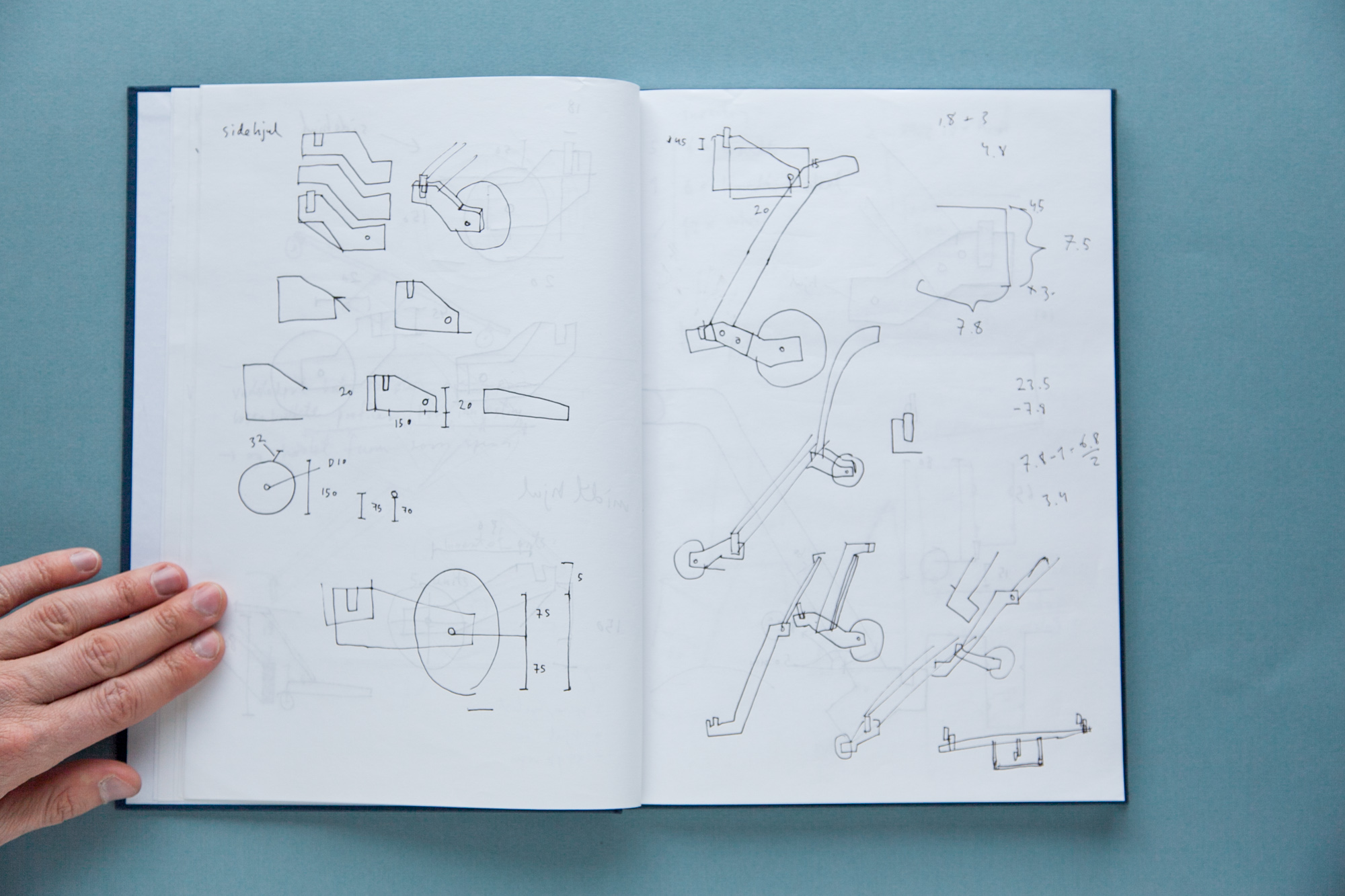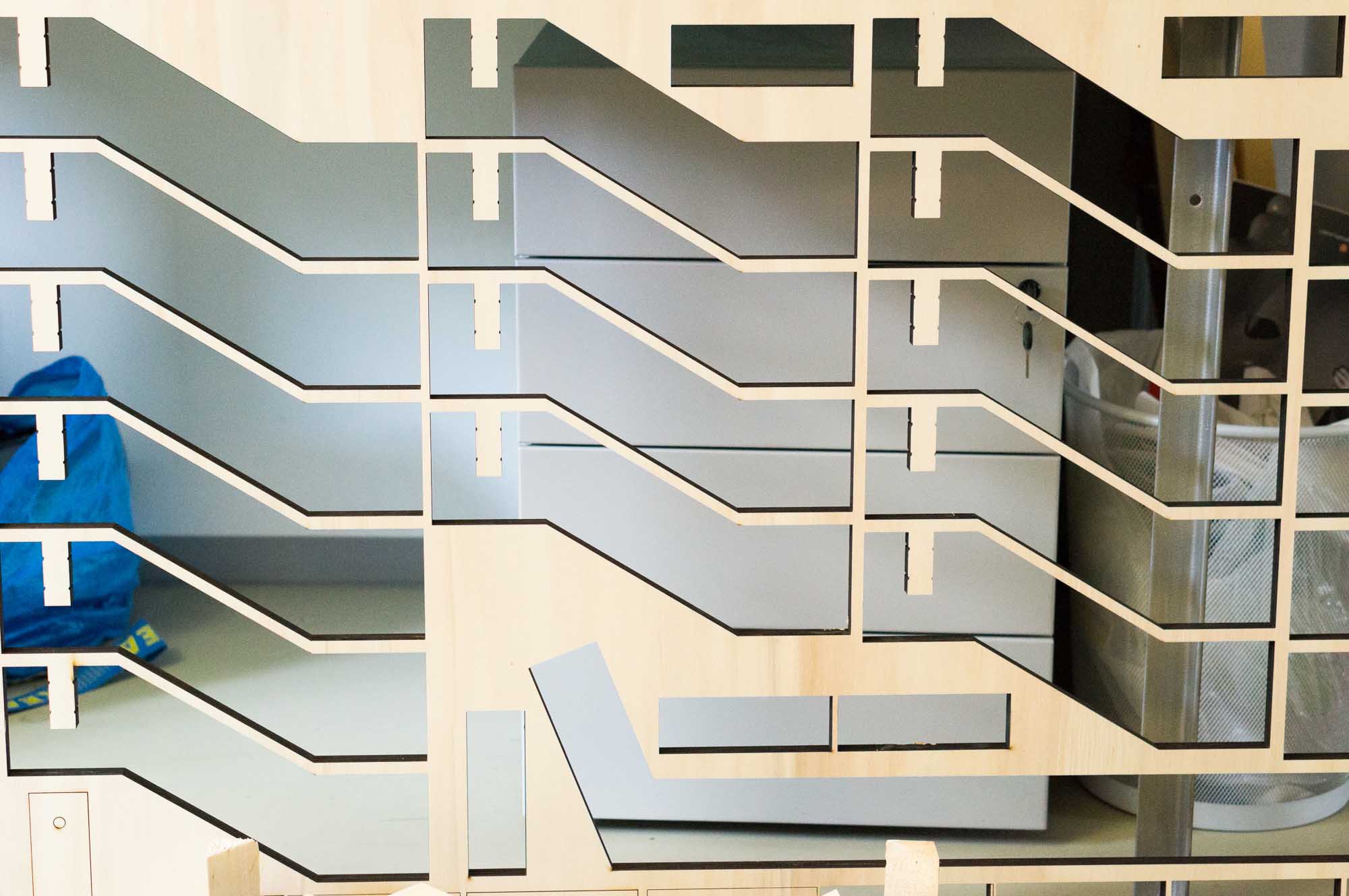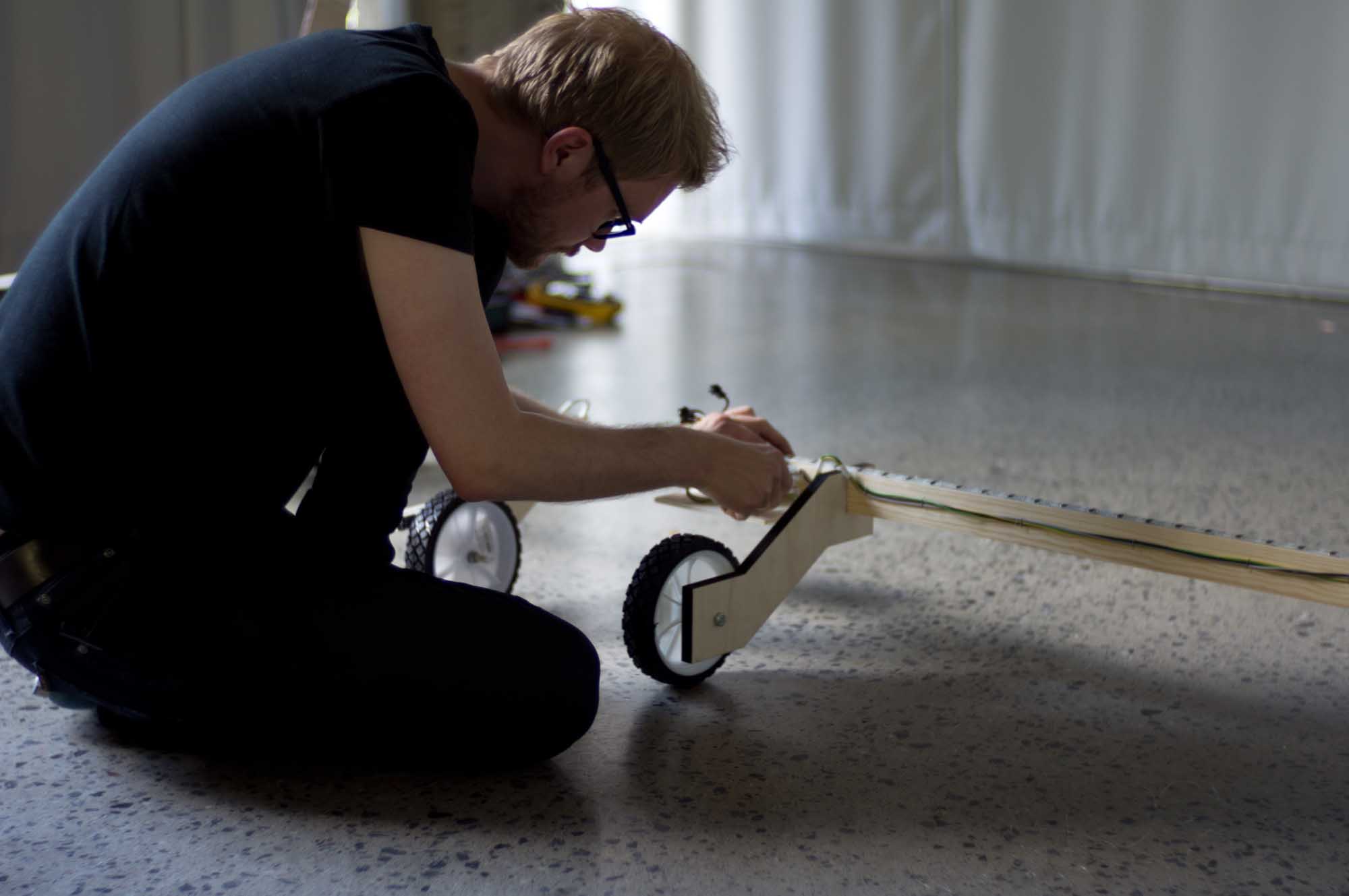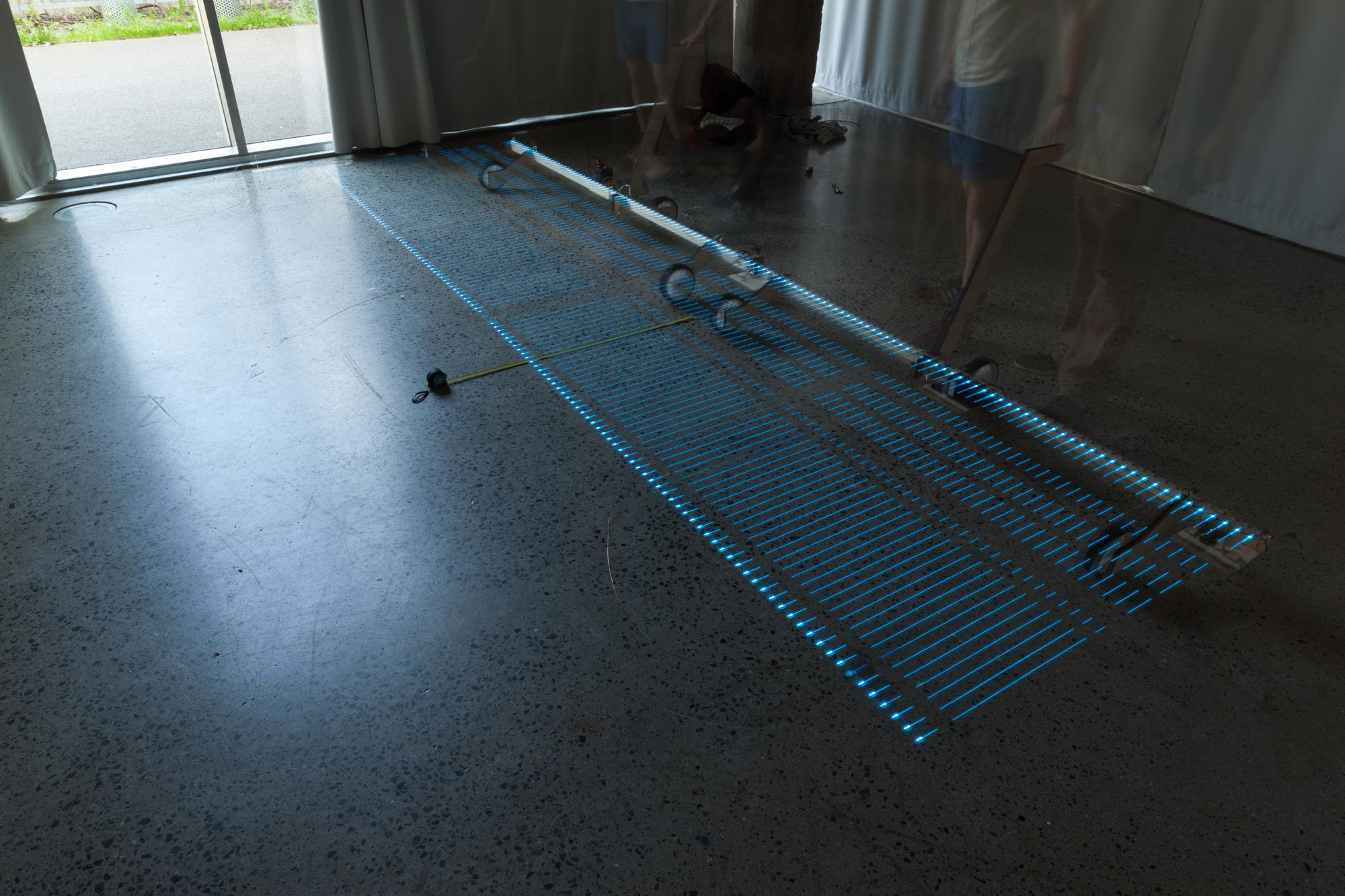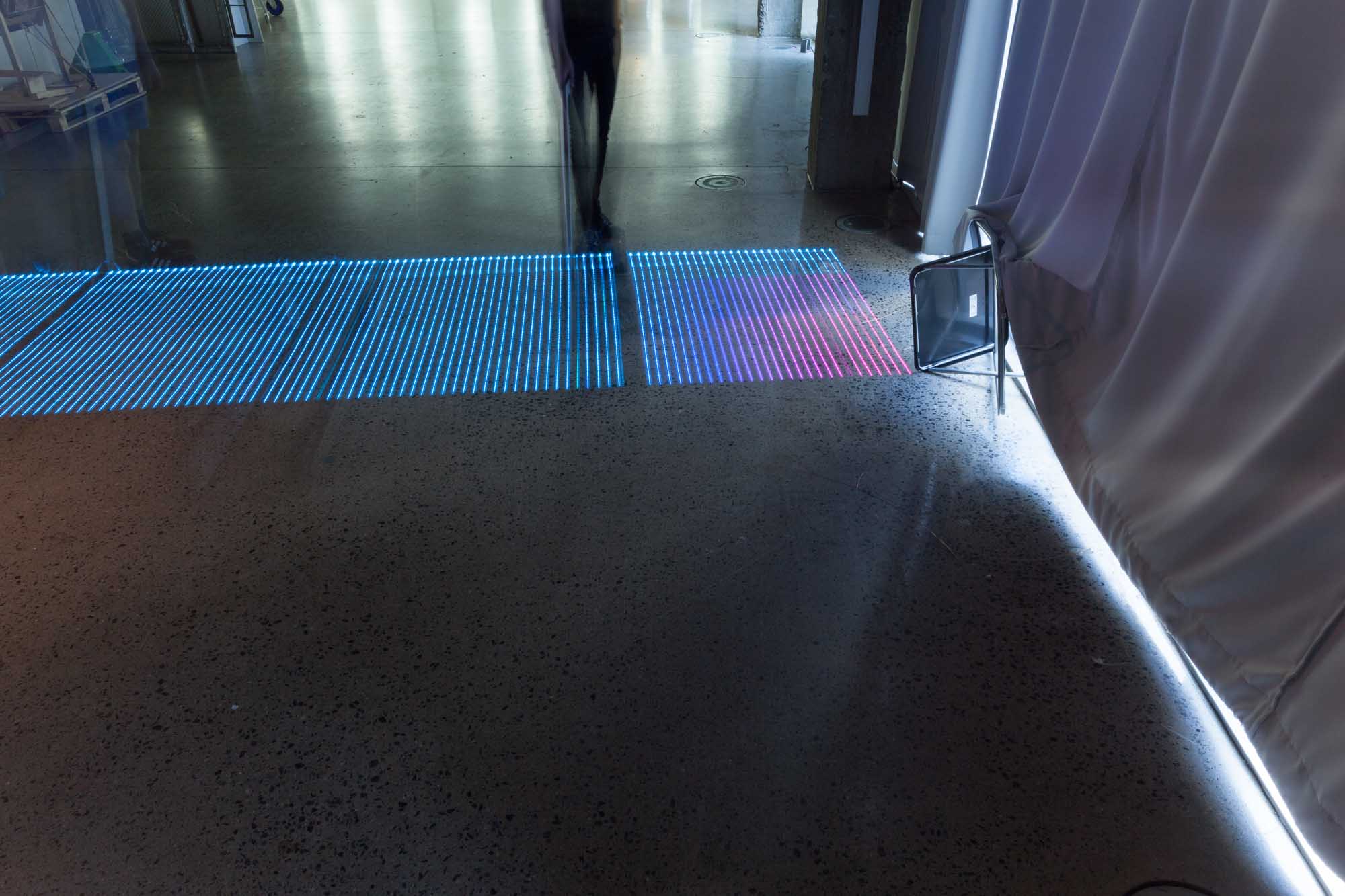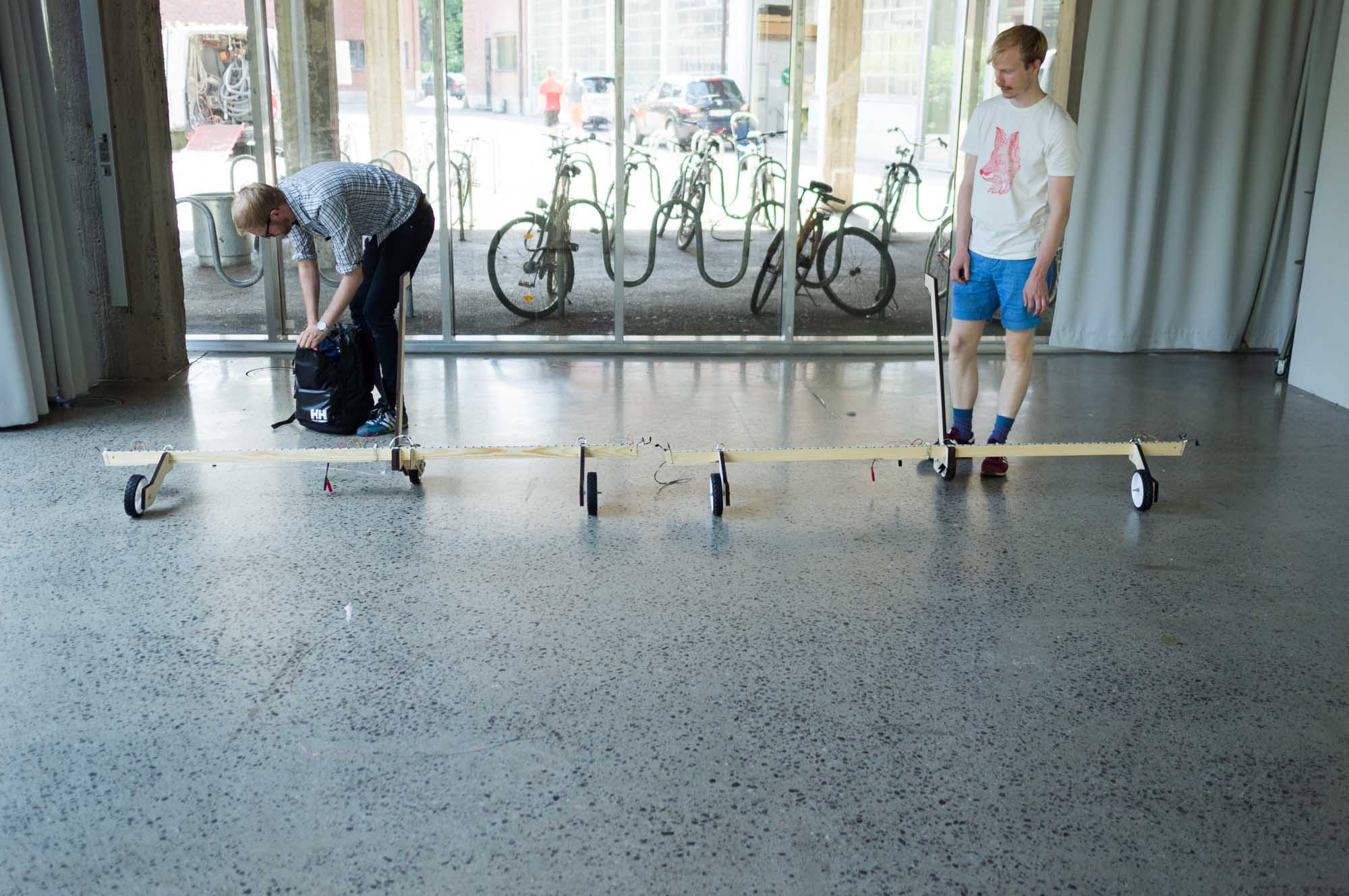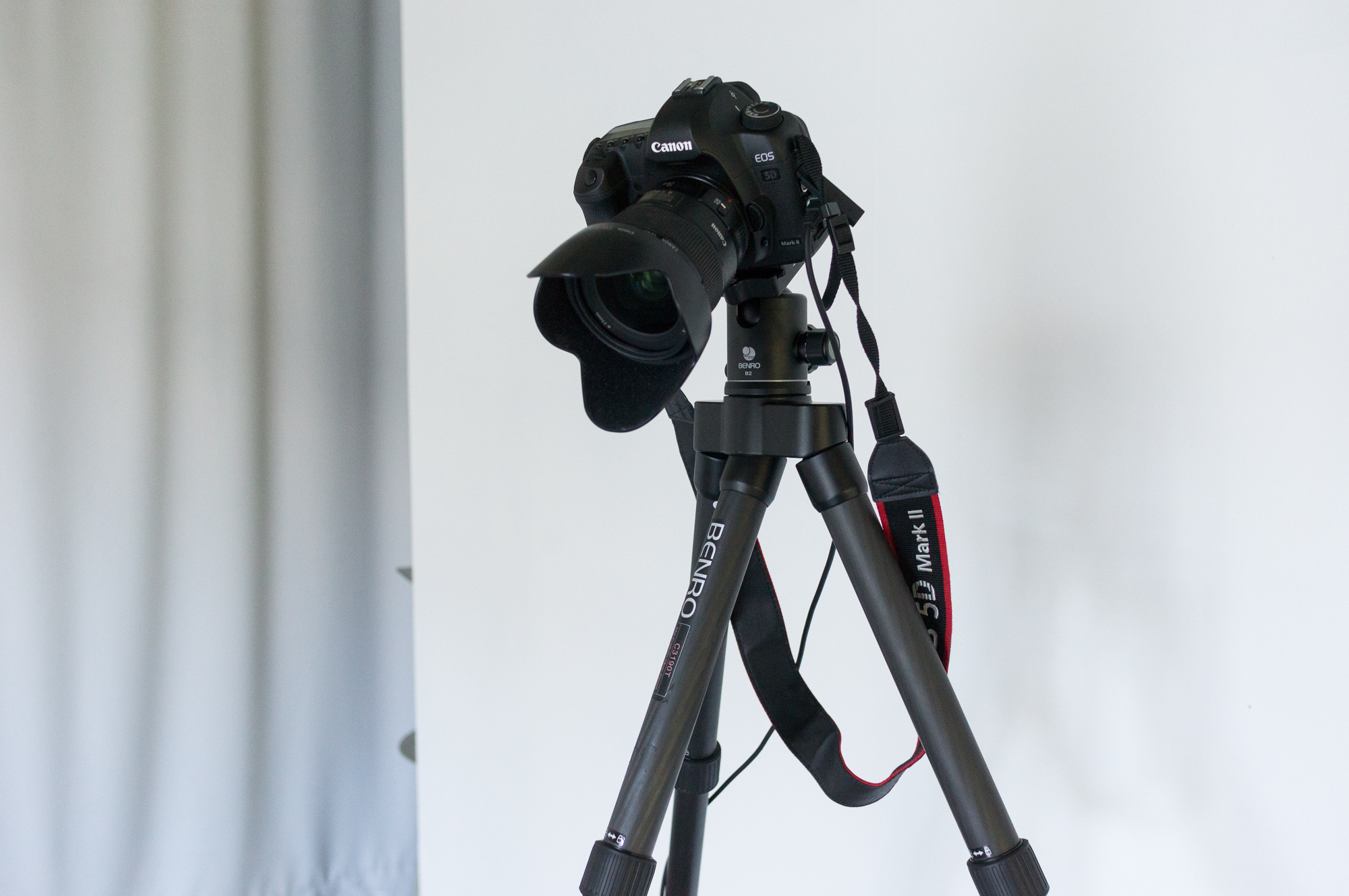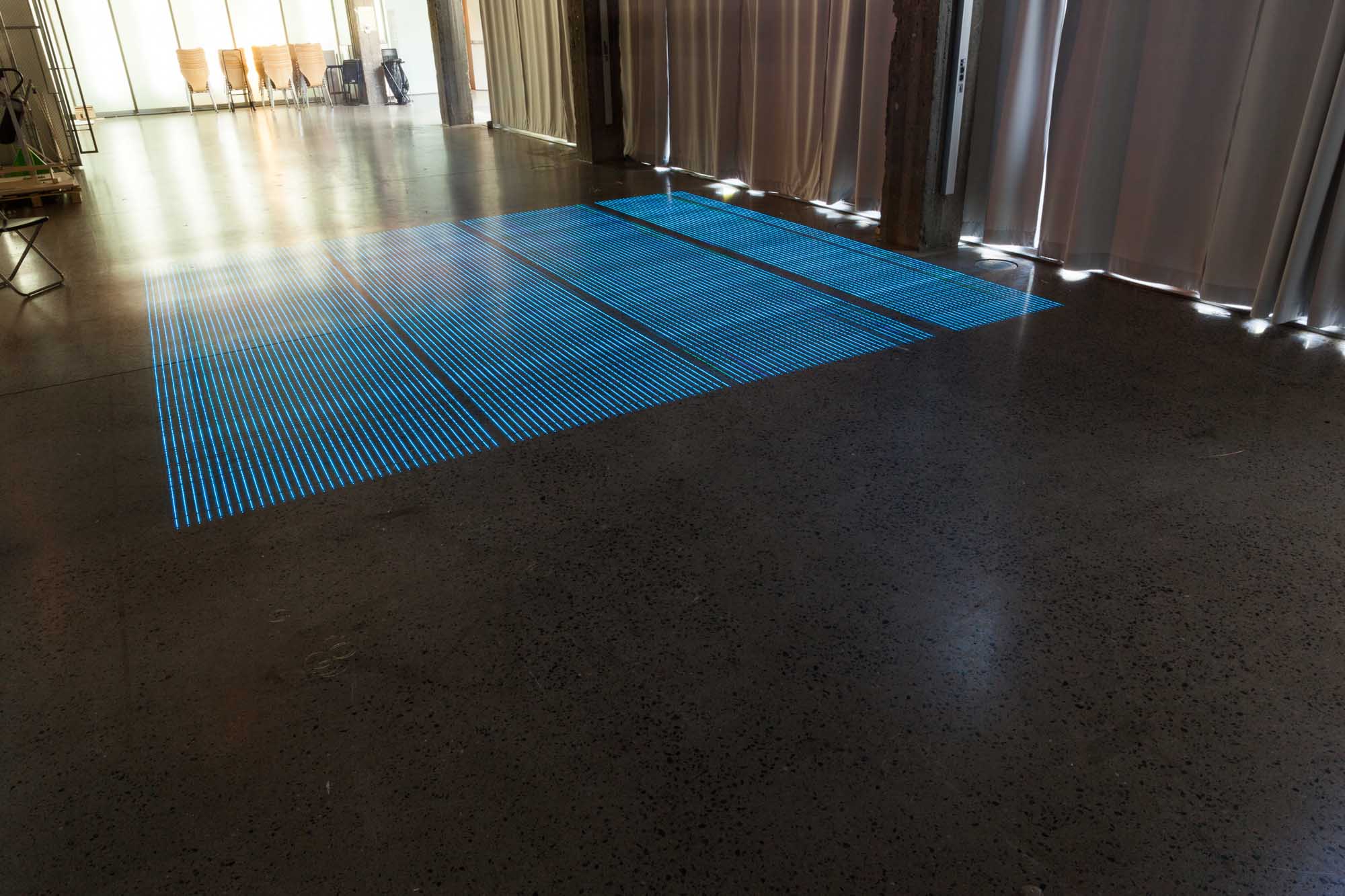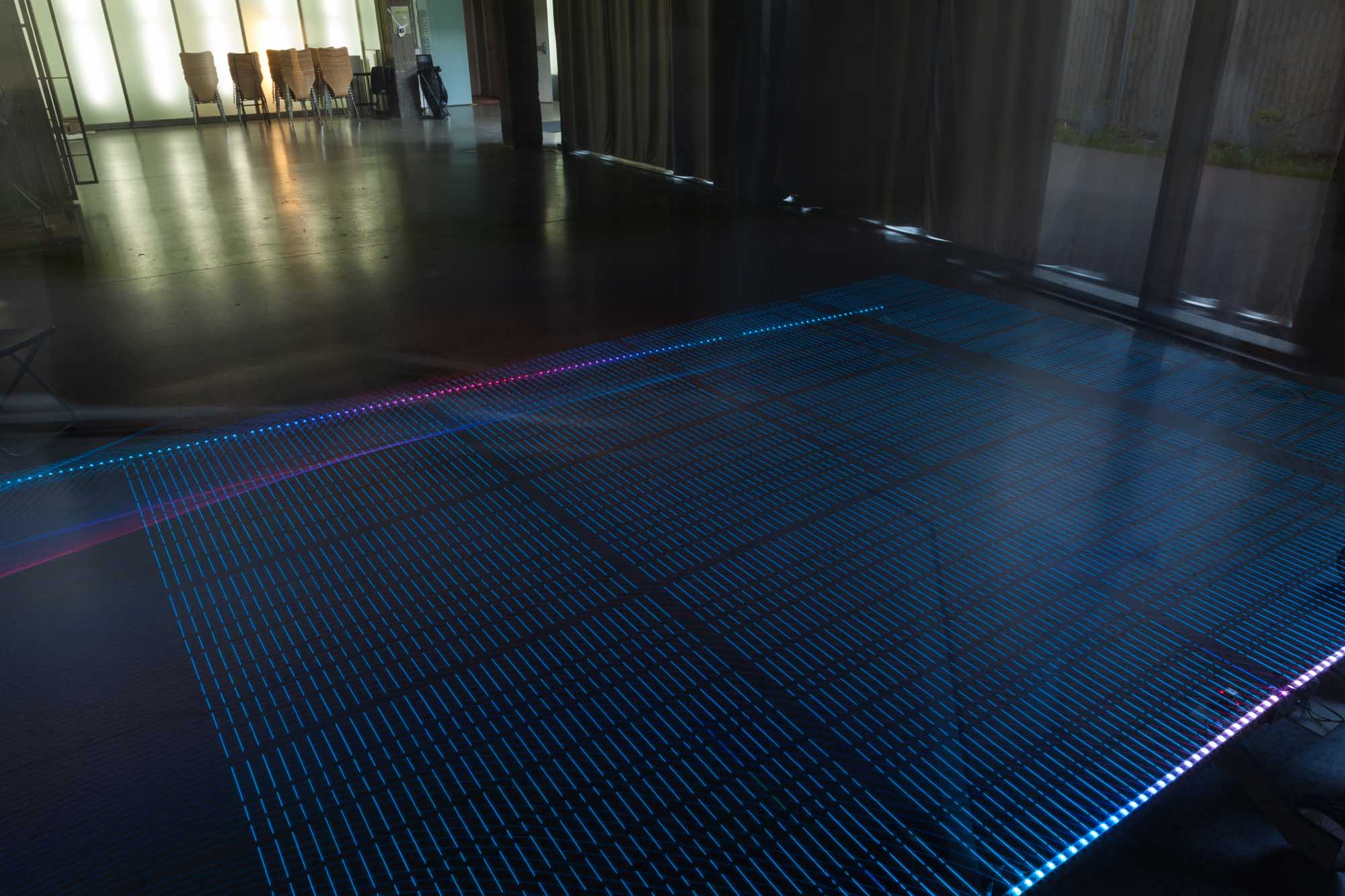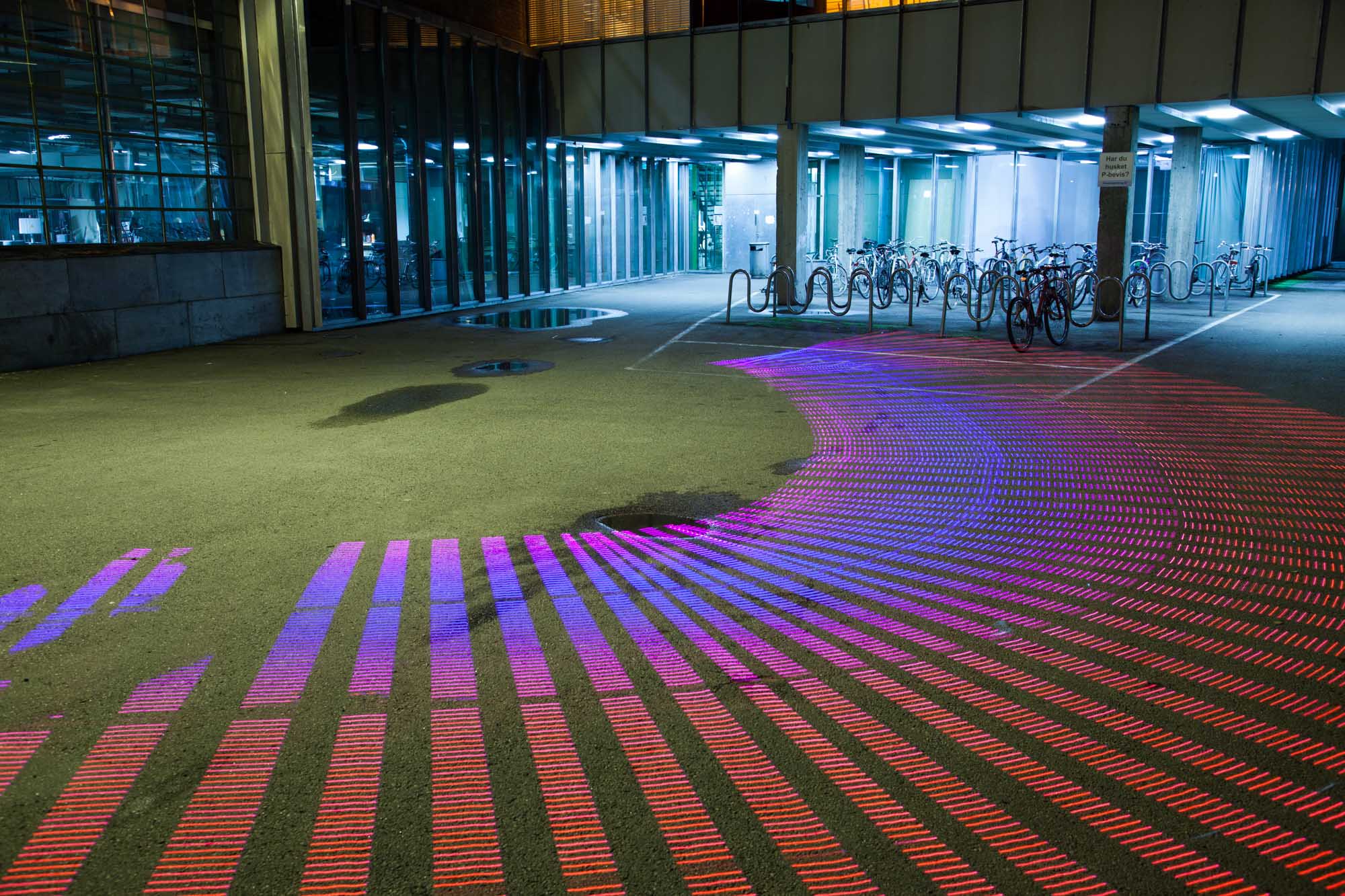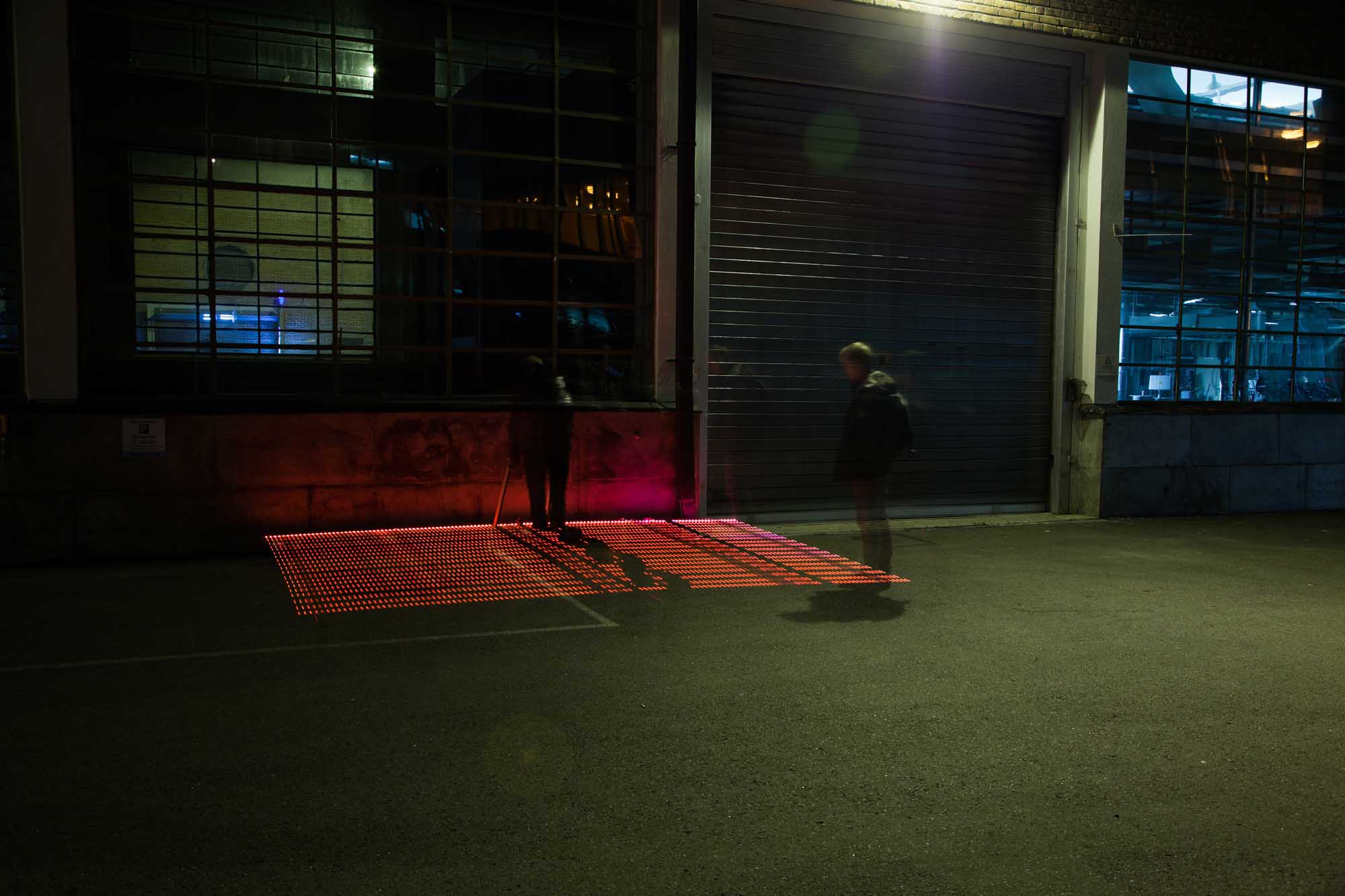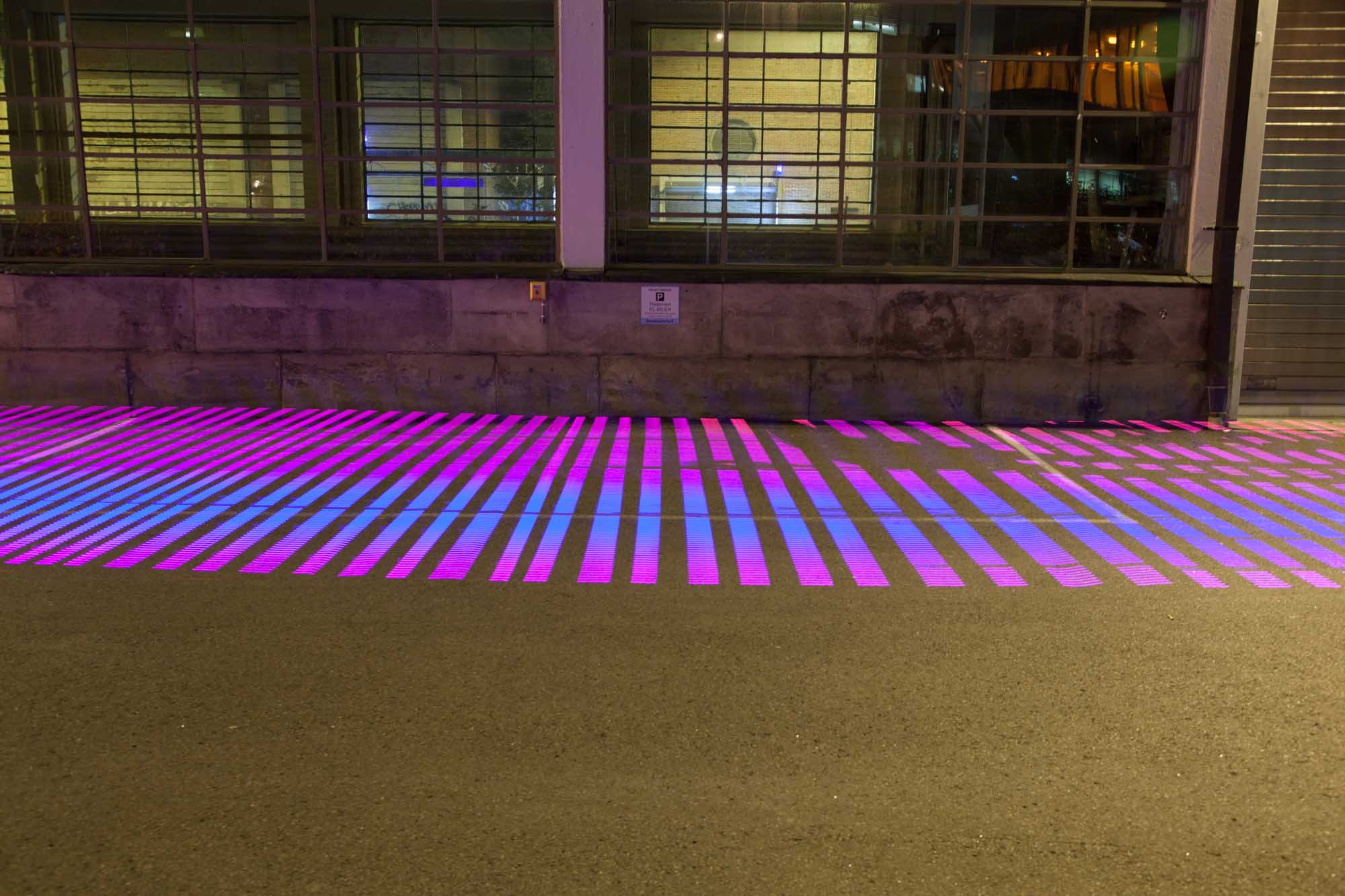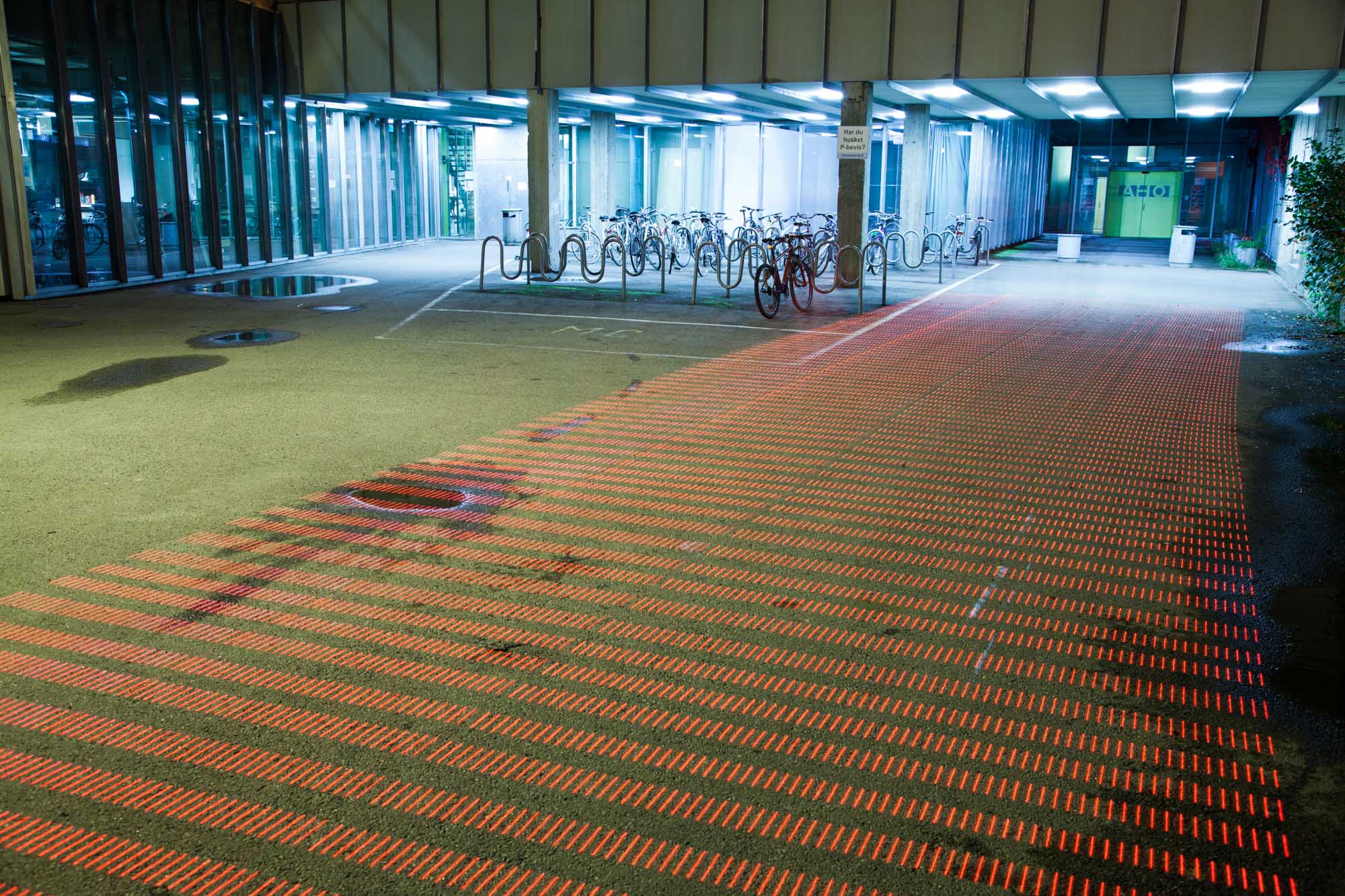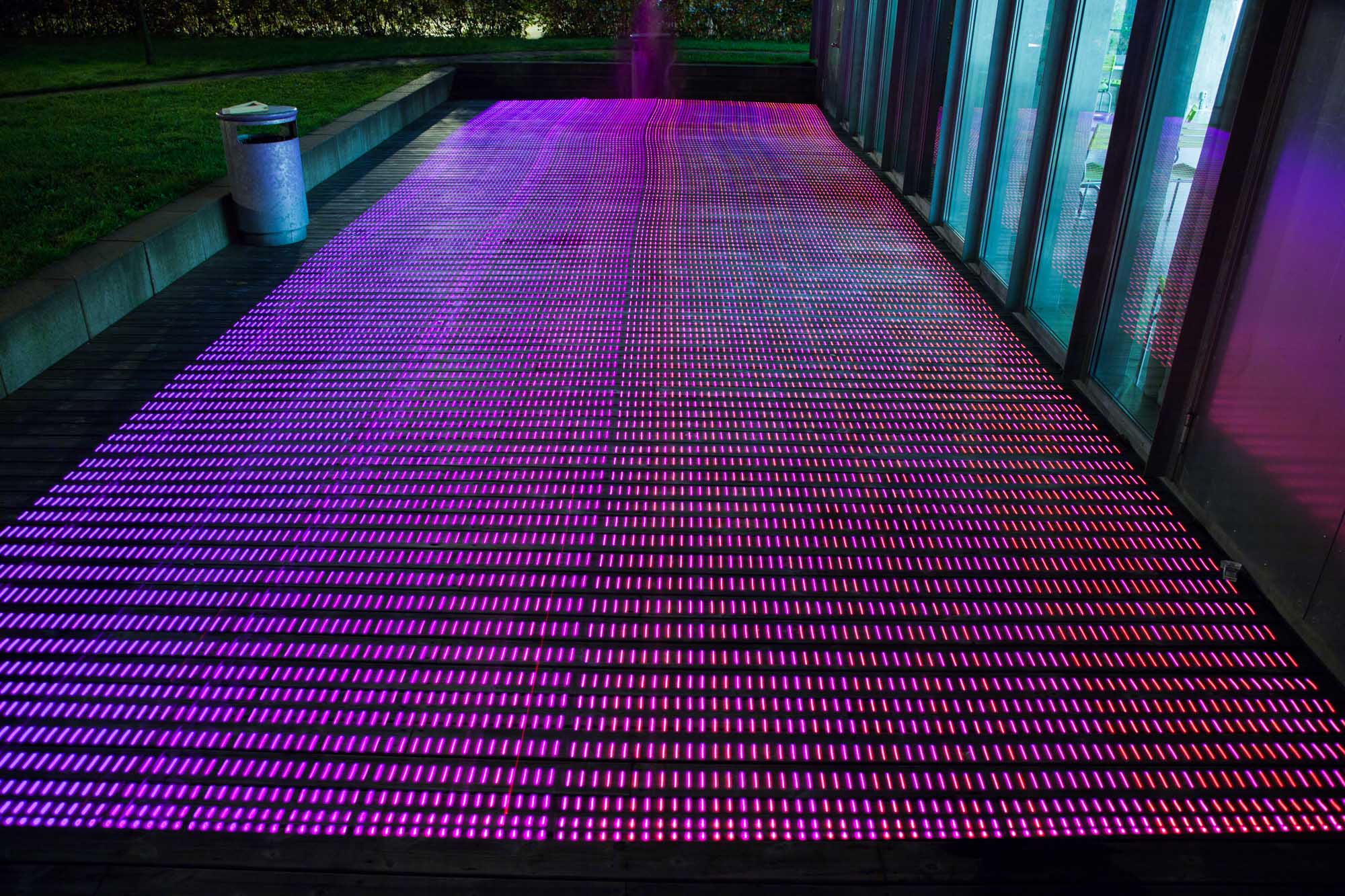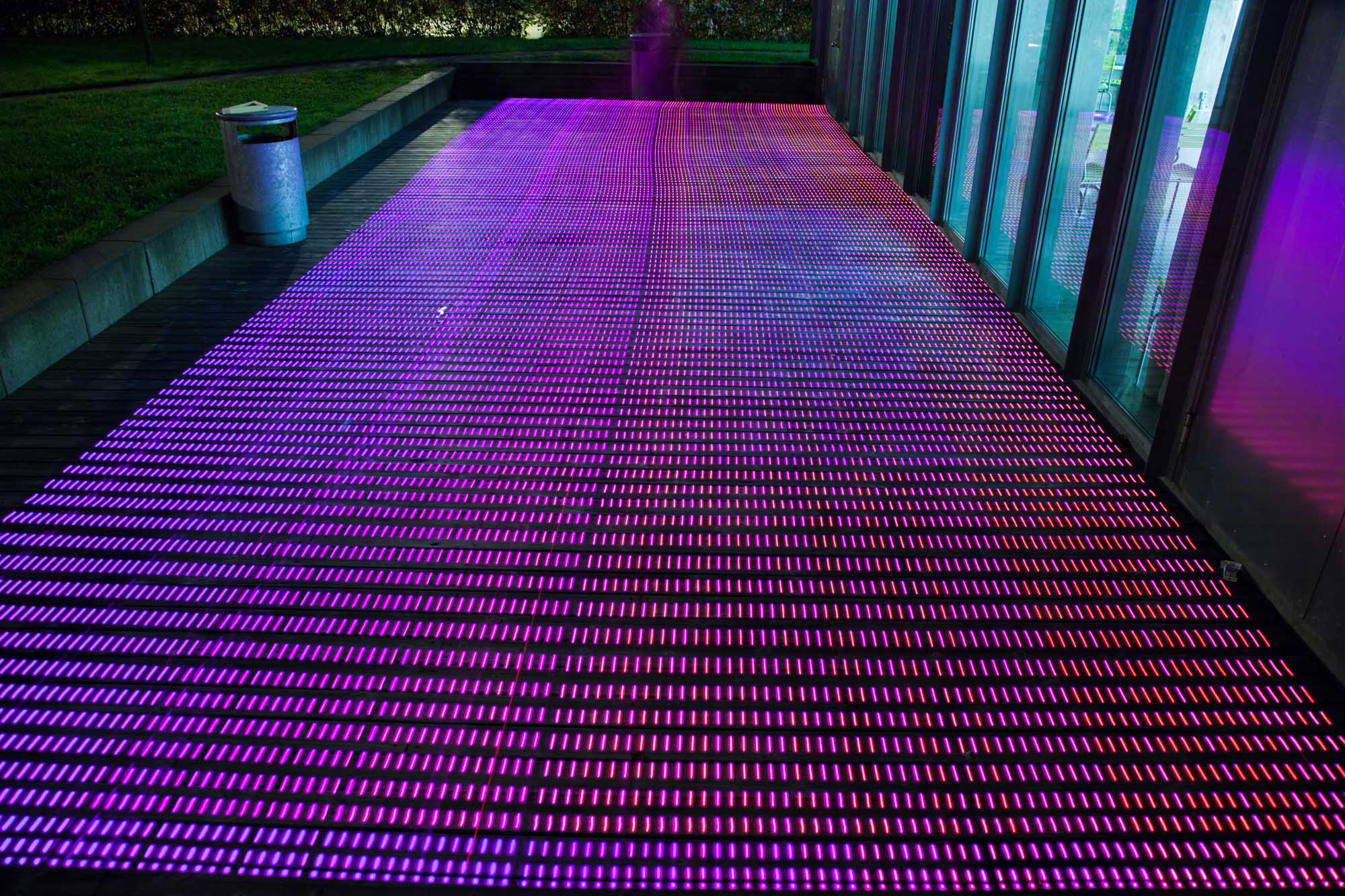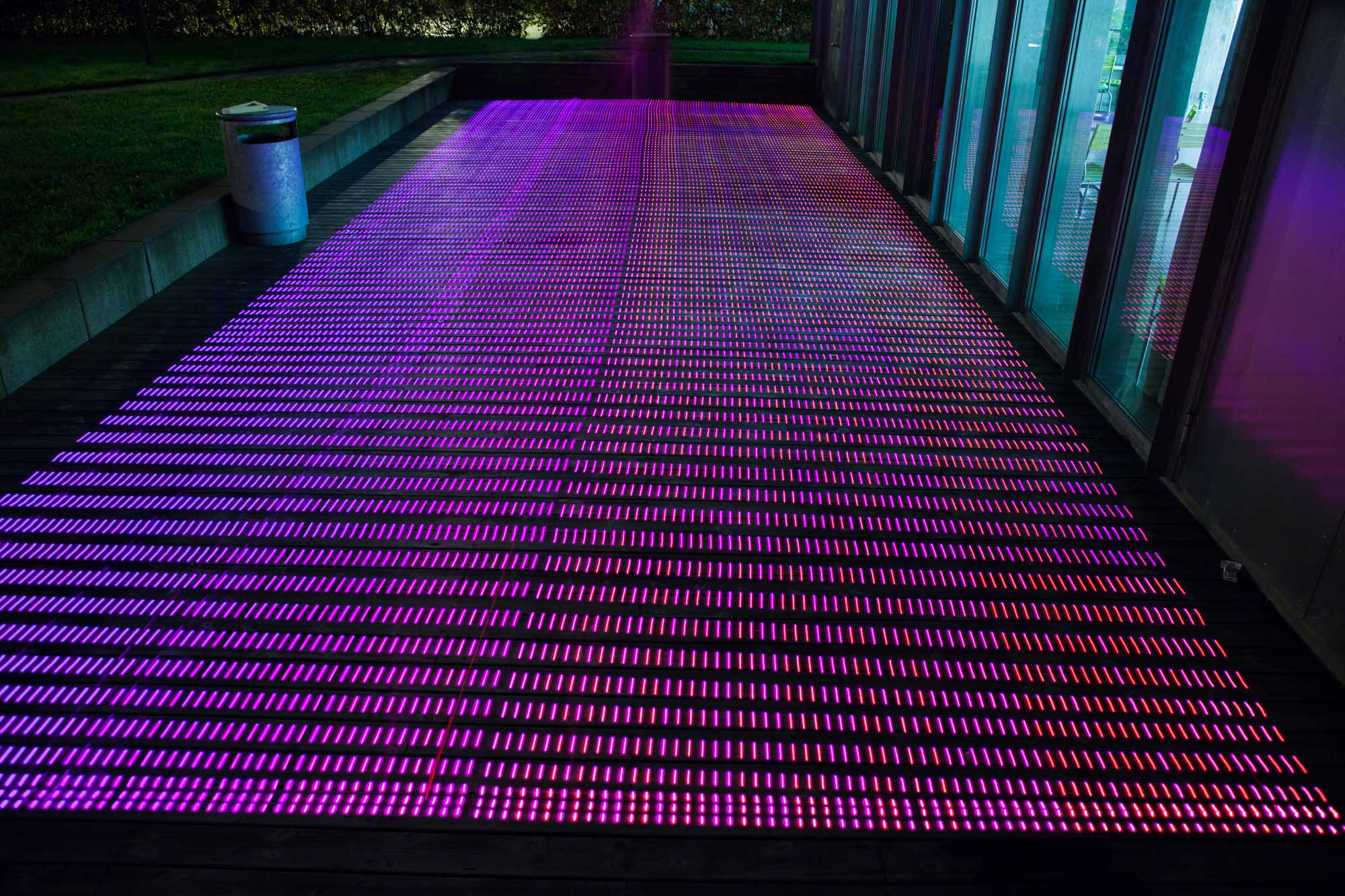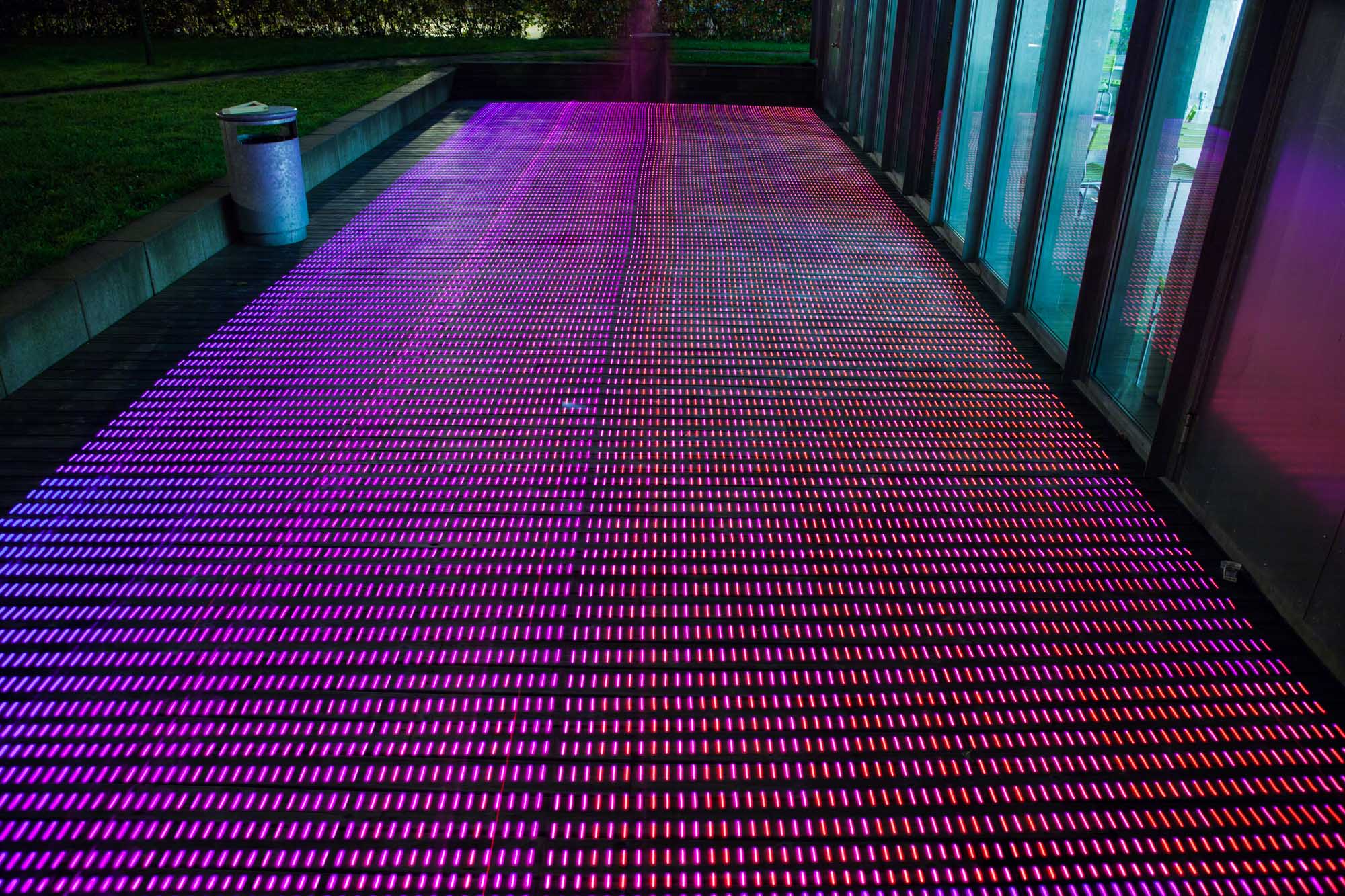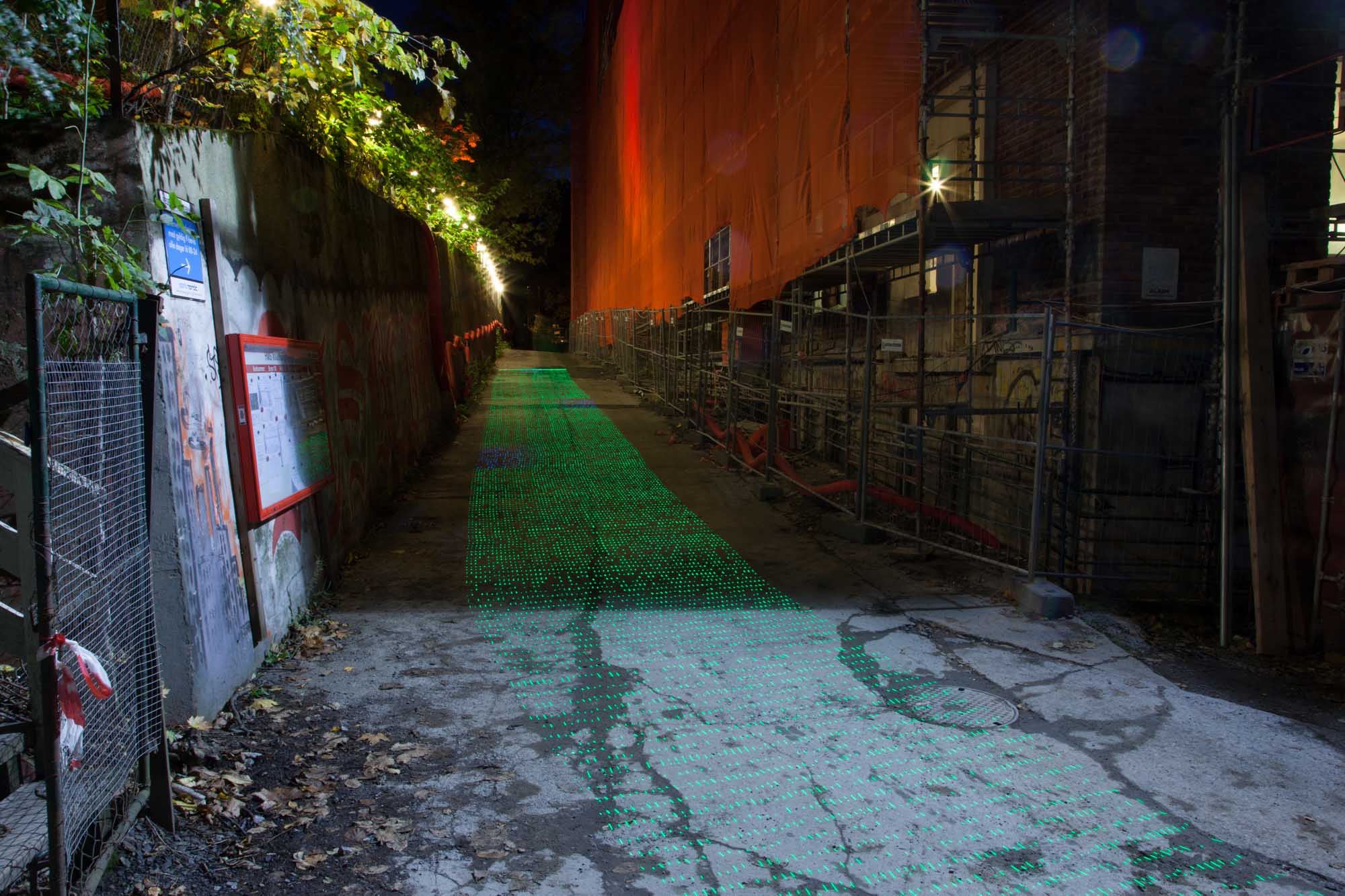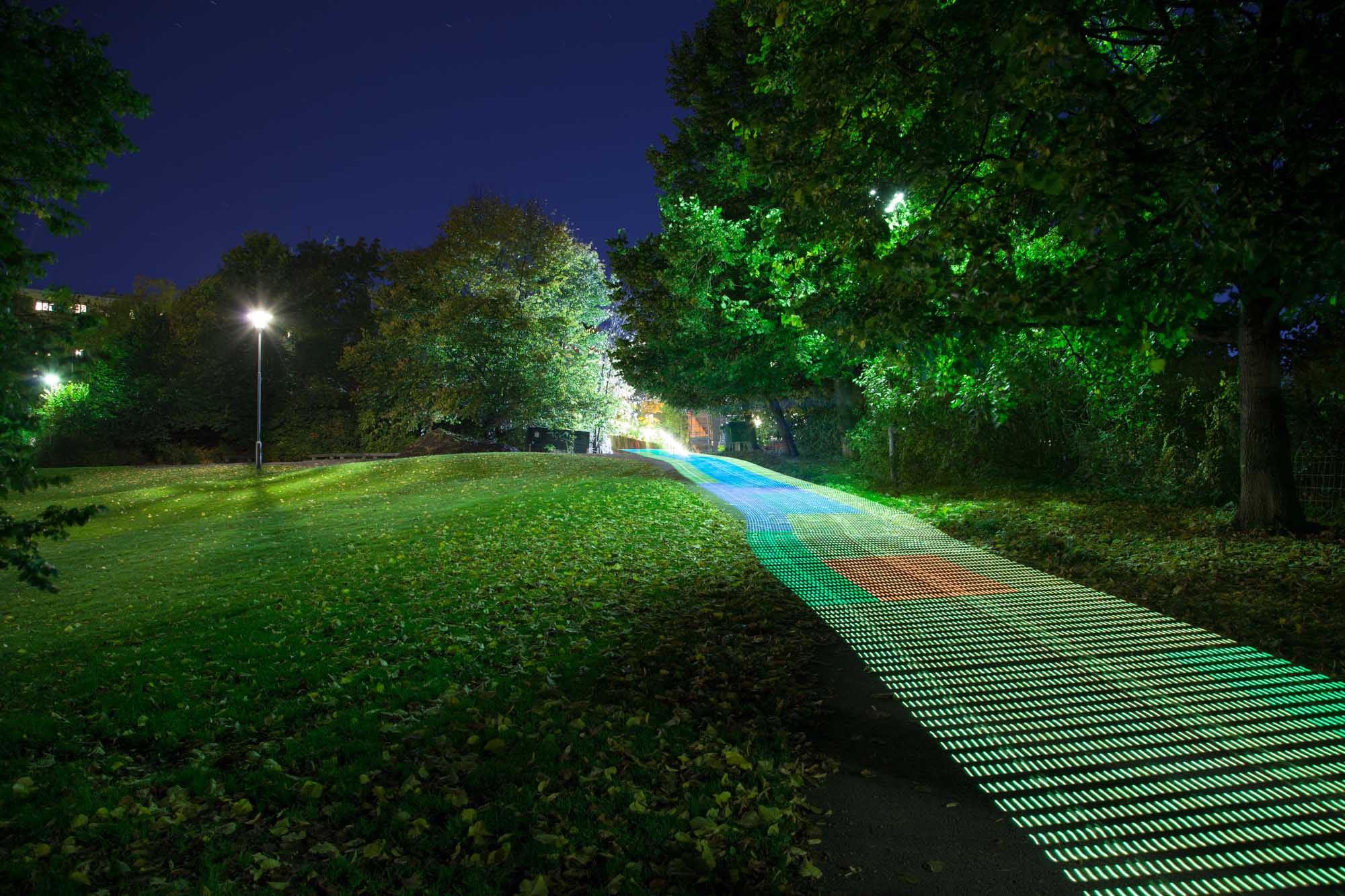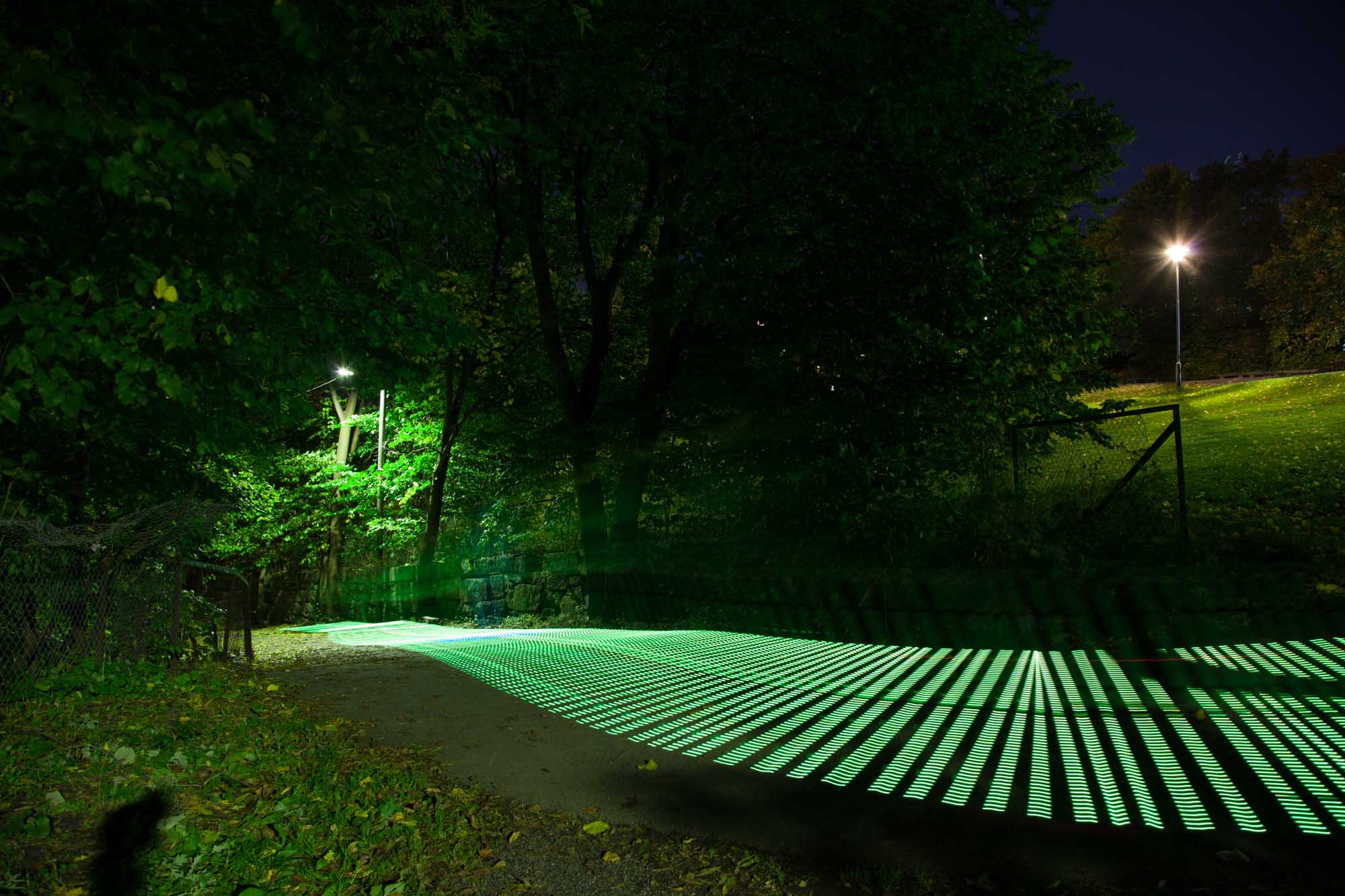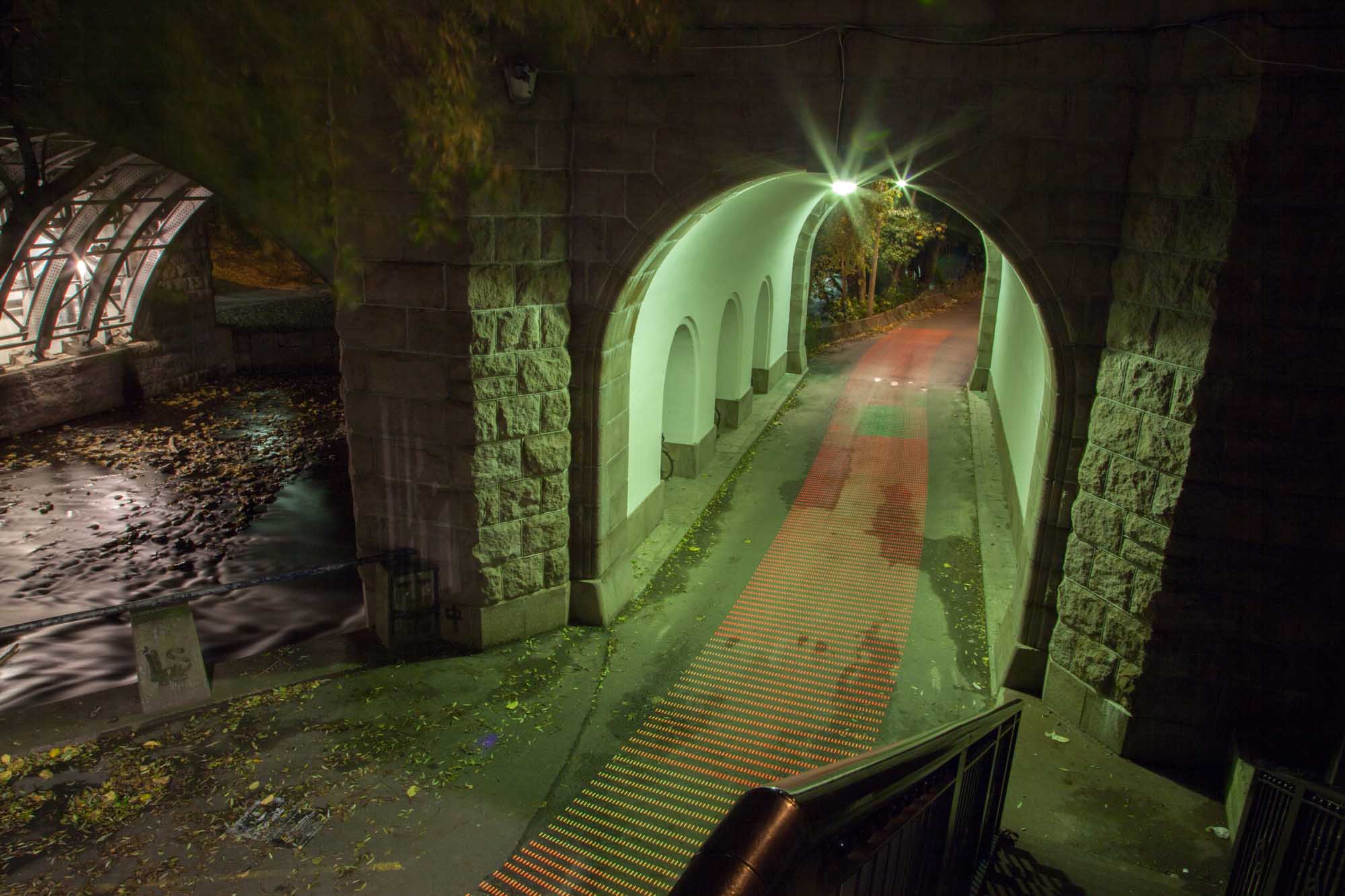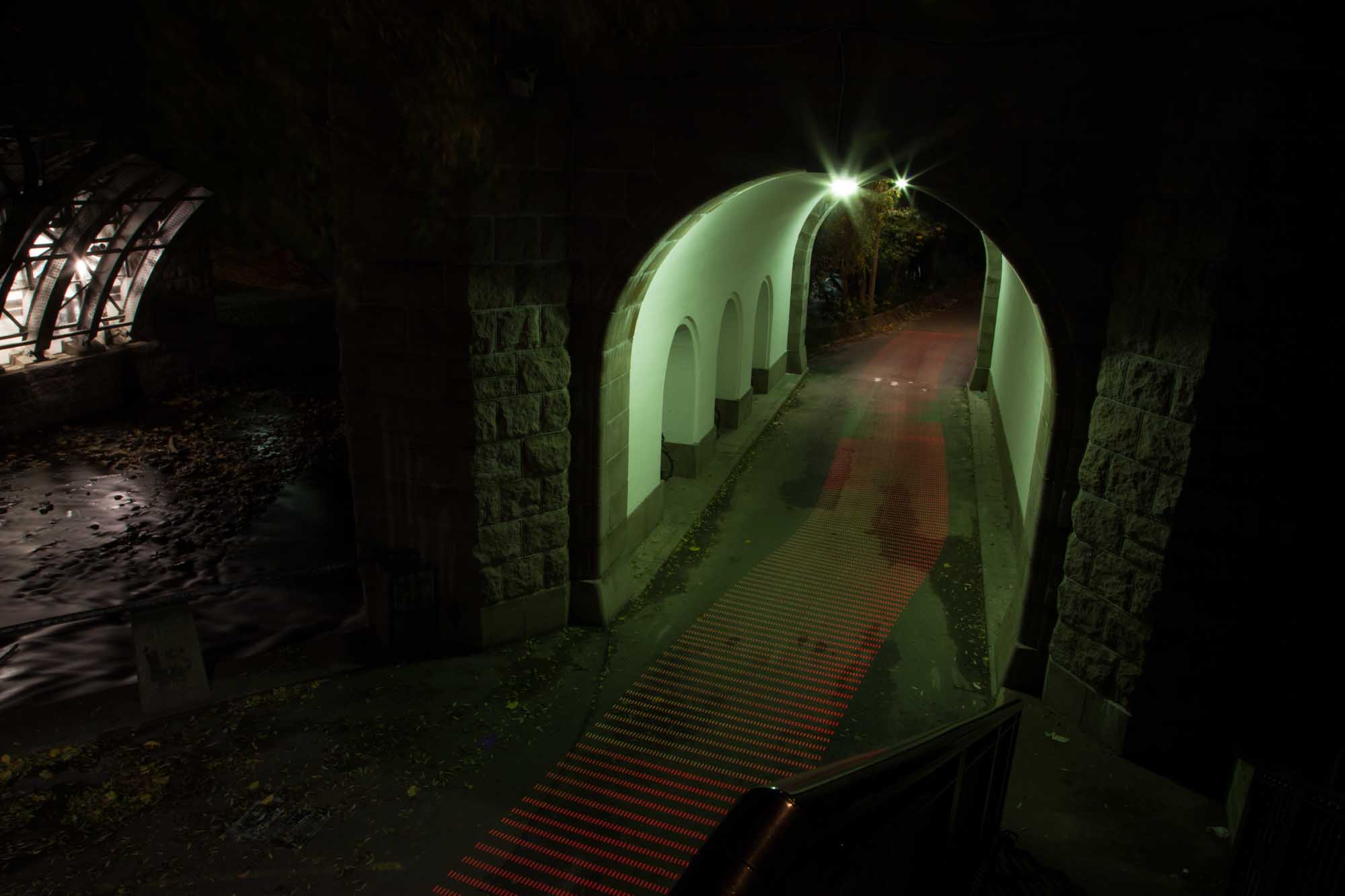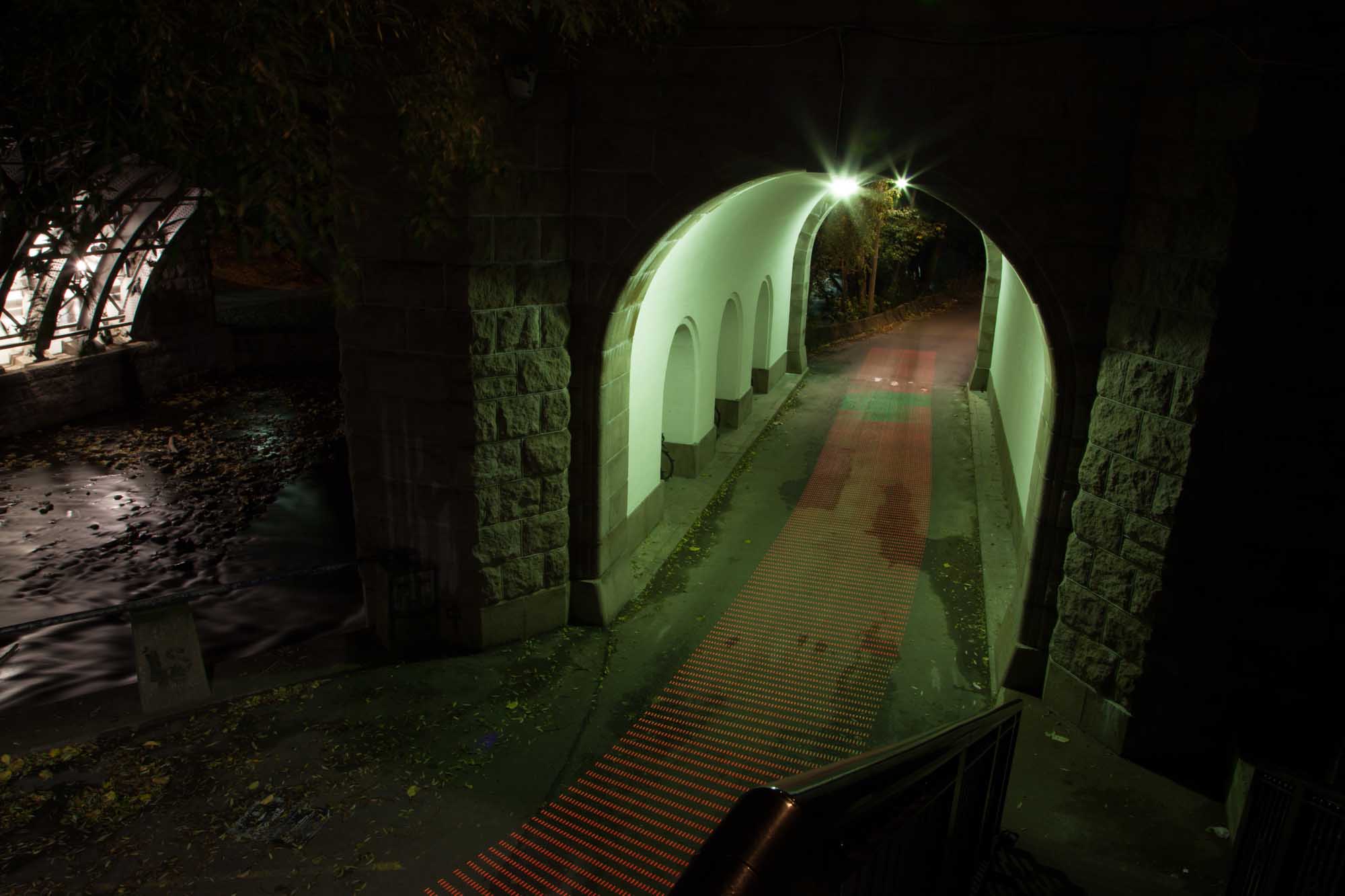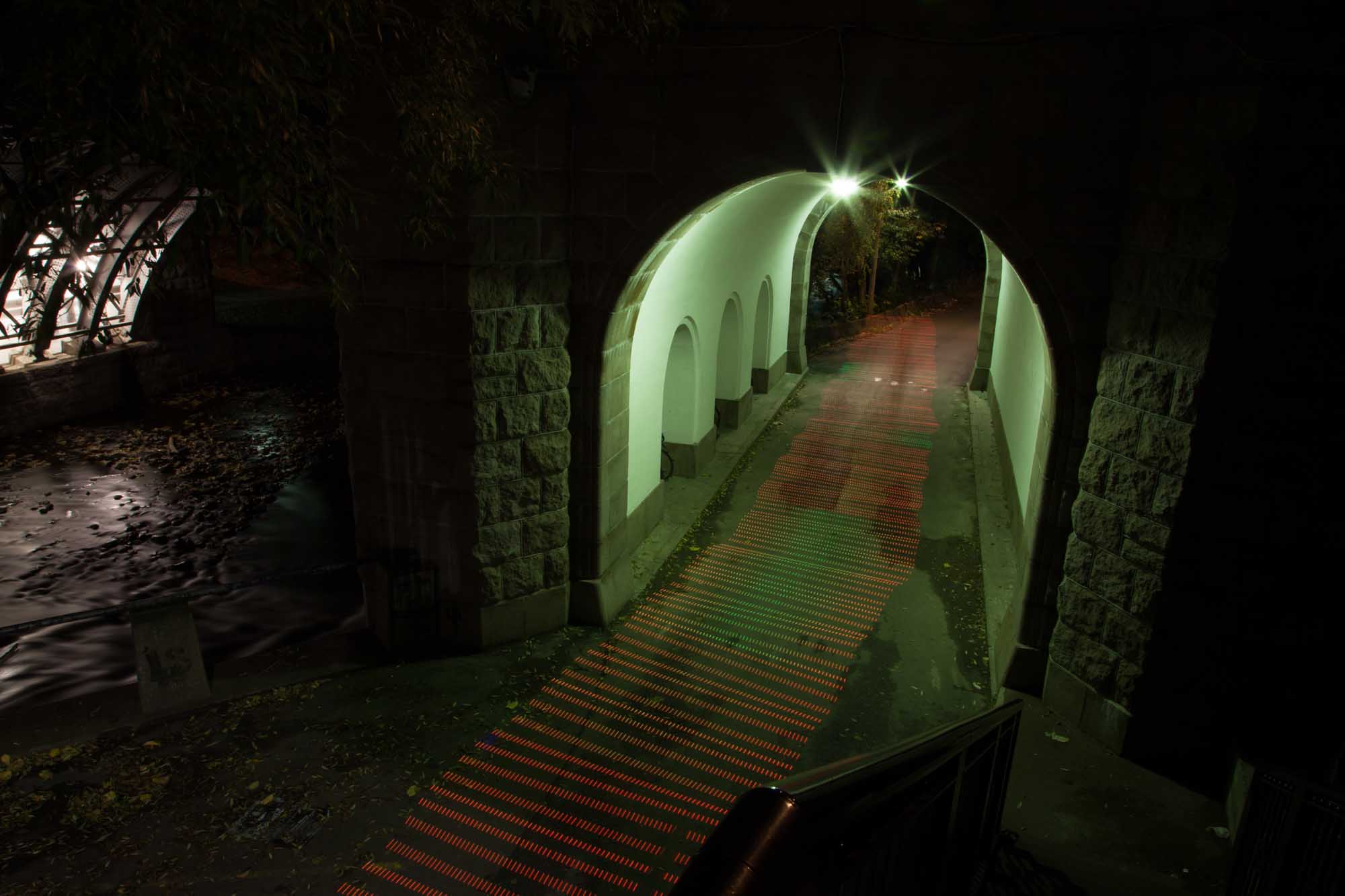CHAPTER 2.3
Visual Exploration
Finding ways of showing
In this chapter, we present our experiments towards visualizing GPS. We give a chronological account of our experiments, the successes and failures, and their iterations. Here we shift from the technical, material explorations presented in the previous chapter towards exploring the communication of GPS.
Light, Photography, and the Invisible
In our Immaterials project we have been using light and photography to show how invisible technological systems inhabit everyday city life. To do this, we have been drawing on a long history of experimental photography.
The technique of light painting has been used for a century to show unseen phenomena such as movement and time (Price, 1989). Light painting is a technique where a moving light source is captured by a stationary camera with a long exposure time. The movement of the light is captured as traces within the photographed scene. Light painting is a pragmatic technique for capturing unseen phenomena in context, but it is also magical and spectacular in its visual qualities.
Our approach of using light painting for showing invisible technologies involved a combination of photographic techniques and designing specialized tools and instruments. This process of building tools for turning data into photographs consisted of both an instrumental aspect, the capturing and showing of data, and an aesthetic exploration toward designing a visual language that is both communicative and expressive (Martinussen, 2012).
Building GPS Instruments
The experiences from our two first projects visualizing RFID and WiFi informed our initial ideas for visualizing GPS. Initially, we wanted to extend these techniques and visual languages to forms that were appropriate to the scale and materiality of GPS.
Our first challenge was finding ways of turning the material explorations, discussed in the previous chapter, into something we could explore in photographic form. As stated in the brief, we wanted to show how GPS takes place in everyday urban spaces—how the urban environment shapes and influences GPS accuracy. The question then became: What are the specific requirements for building an instrument for showing GPS?
GPS operates at a vastly larger scale than RFID and WiFi. In principle, the system covers all outdoor spaces. If we were going to map GPS, we needed to look at the urban landscape, and design tools and rigs that would allow us to experiment at that scale. Our first instruments attempted to address the issues of scale by light painting a representation of GPS accuracy onto the urban terrain. Based on our initial speculations about GPS shadows, we wanted to draw out the differences in accuracy as a carpet of light along the ground.
This slideshow offers an account of the elaborate and technologically complex process of building a rig to light paint GPS accuracy along the ground. This process is not just exploration of the materiality of GPS, but also involves experimentation with the visual metaphors and languages for communicating the phenomena.
During this process of building and experimenting, we gained new insights and experience about the hardware, the materiality of GPS and the ways of visualizing it. In other words, we engaged with the situation, and the situation talked back (Schön, 1983).
Heatmaps
Throughout these first experiments, we explored the technical and visual possibilities of our first functional, rolling rig. Based on the outcome of these initial tests, we decided to pursue heatmaps as a visual metaphor.
Heatmaps show a two-dimensional matrix, where one variable, like temperature, is represented as shifts in colour. Warm colours like red or orange usually indicate high values, while cold colours like blue indicate low values. Because heatmaps are relatively familiar and visually simple to explain, they provided an existing references that we could rely on.

NASA Earth Observatory image by Jesse Allen, using MODIS data provided by Land Processes Distributed Active Archive Center (LPDAAC).
Building a rig for light painting along the ground was a similar to the process we used in earlier experiments with WiFi, but at an even larger scale. What we hoped to do with the rig was to draw out huge heatmaps next to buildings, in car-parks, and across roads. We expected to be able to make multiple images of the same space, and then see the patterns of GPS accuracy move through the space.
In the following gallery we show our first tests of GPS heatmaps. In these, we map GPS accuracy values (based on DOP as outlined in the previous chapter) to colors between blue (poor accuracy) and pink (good accuracy).
To summarise this experiment, we saw a sharp cut-off in GPS accuracy made by a curtain—a seam between GPS coverage and the absence of coverage. Although we could confirm that the technicalities of the rig worked, and we could glimpse the potential for heatmap visualizations, it was frustrating that we could not reproduce consistent results in our images.
These indoor tests offered us an understanding of how the rig behaved, but we really wanted to to see it working outdoors. In the next gallery, we show our first night-time experiments in drawing out GPS heatmaps outdoors, in the actual context of the urban environment.
This second experiment with the rolling rig revealed several challenges: First, it was difficult to determine the differences between the peculiarities of the GPS sensors and the signals we were measuring. We theorized that we were dealing with a combination of slightly miscalibrated GPS sensors, sampling a too wide spectrum of DOP values and sites that contained too much direct line of sight to the satellites. We needed to recalibrate the hardware and find new sites with higher buildings and narrower streets.
Second, it was hard to read the meaningful information in the photographic heatmaps. The light painting along the ground was visually disturbed by the patterns of grass and asphalt, and hard to photograph well because of the need for a high vantage point. We wondered how we were going to explain it to people: Did we have to explain everything from light painting, heatmaps, and GPS in order for it to make sense?
Third, we realised that the peculiarities of GPS over time might be confusing our spatial mappings. Perhaps the GPS signals were changing so fast that our spatial mappings didn’t make sense (each exposure took between 15 and 30 seconds). These inconsistencies meant that the visual patterns were incomprehensible and unsatisfying as spatial mappings.
These experiments with heatmaps had shown that we couldn’t produce consistent, understandable or communicable patterns. They led us to consider new ways of abstracting and presenting the data in our visualizations. The gallery below presents our experiments trying to deal with these challenges.
Although many of these images are beautiful, spectacular even, they also brought with them a range of challenges and problems. First, it’s hard to find meaningful spatial patterns in these visualizations because GPS changes significantly during the time it takes for one exposure. Second, it’s difficult to represent the changes in GPS accuracy through color, which is distorted through long exposure times and a high point of view. Third, we showed our images to other people and found that they required too much explanation about the light-painting technique, rig, and heatmaps to be immediately understandable. We realized that there was a need for reducing complexity, both for understanding it ourselves and for communicating to others.
This was a difficult stage. We experienced disillusionment with our process, technical setup, and visual language. We had to step back and reflect on our approach. How could we make communicative images about GPS accuracy in the city? Were light painting and heatmaps the appropriate means to this end? The next section recounts our quest for a more communicative and effective visual language.
PAGE REFERENCES
- Arnall, Timo, & Martinussen, Einar Sneve. (2010). Depth of field: Discursive design research through film. FORMakademisk, 3 (1), 100–122.
- Feininger, Andreas. (1949). Navy Helicopter or Pattern Made by Helicopter Wing Lights [photograph]. Time & Life Pictures. New York, NY, US.
- Martinussen, Einar Sneve. (2012). Making material of the networked city: Research by design and the renovation of practice. In Michael U. Hensel (Ed.), Design innovation for the built environment (pp. 235–247). London, England: Routledge.
- Mili, Gjon. (1945). Carol Lynne Skates with Lights on her Toes [photograph]. Life Magazine, 26 Mar 1945, p. 109. New York, NY, US.
- NASA. (2012). NASA Maps Heat Wave Fueling Wildfires in the Rockies [Map]. Retrieved August 12, 2014, from http://www.nasa.gov/mission_pages/fires/main/usa/20120629-westernUS.html
- National Museum of American History. (1914). Work Simplification Study [Photograph]. Frank and Lillian Gilbreth Collection, 1907-2000 (bulk 1911-1924), Archives Center, National Museum of American History, Washington, D.C.
- Price, Brian. (1989). Frank and Lillian Gilbreth and the manufacture and marketing of motion study, 1908–1924. Business and Economic History, 18, 88–98.
- Ray, Man. (1937). Space Writing [photograph]. Collection SFMOMA. © Man Ray Trust / Artists Rights Society (ARS), New York / ADAGP, Paris.
- Schön, Donald A. (1983). The reflective practitioner: How professionals think in action. New York, NY: Basic Books.
